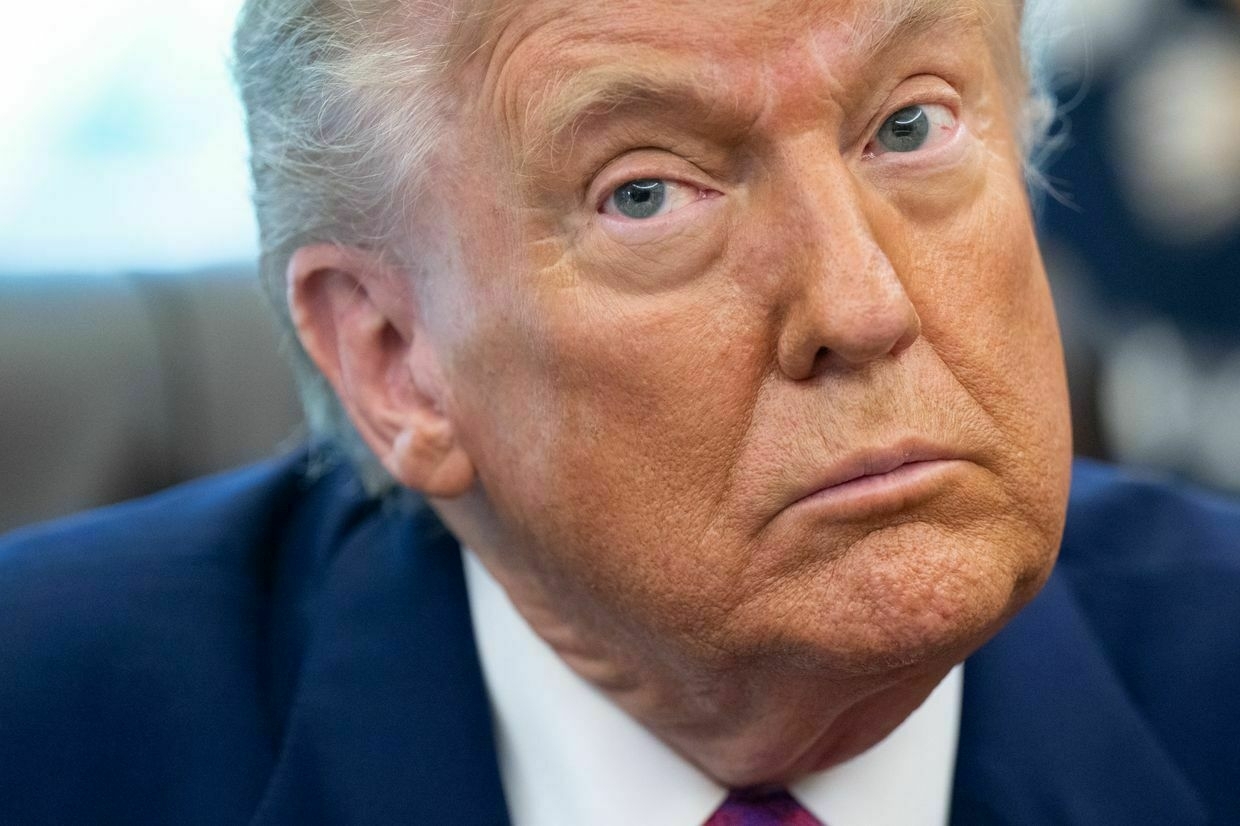-
Ukrainian intelligence disables Russian military infrastructure in covert Kaliningrad operation
In a covert operation conducted overnight on June 14, Ukrainian military intelligence agents successfully targeted an electrical substation in Kaliningrad, Russia, cutting power to critical components of the Russian military-industrial complex and Armed Forces units. Chennel 24 reports, citing sources within the Main Intelligence Directorate (GUR) of Ukraine's Ministry of Defense, the meticulously planned sabotage rendered significant Russian facilities completely powerless.
Taking place around 4 a.m. on that Saturday, the operation is reported to have caused nearly $5 million USD in damages for Russia. Ukrainian operatives employed a unique strategy, first draining the coolant from a power transformer at the substation, then setting the site ablaze. The resulting fire inflicted substantial damage, effectively halting the energy supply to military enterprises.
"As we've reiterated, Russia no longer has a rear, whether in the East, West, or any other place on the planet. Every Russian entity involved in the war against Ukraine will face burning, sinking, and destruction, irrespective of its protection level or location," a source emphasized.
This incident illustrates the expanding capabilities of Ukrainian special forces to execute effective operations deep within hostile territories.
-
Ukrainian actor Yuriy Felipenko killed on the front line

Ukrainian actor Yuriy Felipenko, who worked with Kyiv Independent reporters, was killed at the frontline, his wife Kateryna Motrych wrote on social media on June 15.
Felipenko was well known for his role in the 2024 television series “A Promise to God” before joining the Achilles Strike Drone Battalion, then part of Ukraine’s 92nd Assault Brigade, in April 2024.Having since been upgraded to a separate regiment and one of the founding units of the Line of Drones initiative, Achilles is one of the most effective drone units in the country.
“Yura was killed. Yura was, without exaggeration, my world, my soul, my light. It is impossible to convey this loss. I feel like I have been destroyed,” Motrych wrote on her Instagram page, accompanied by a photo of Felipenko.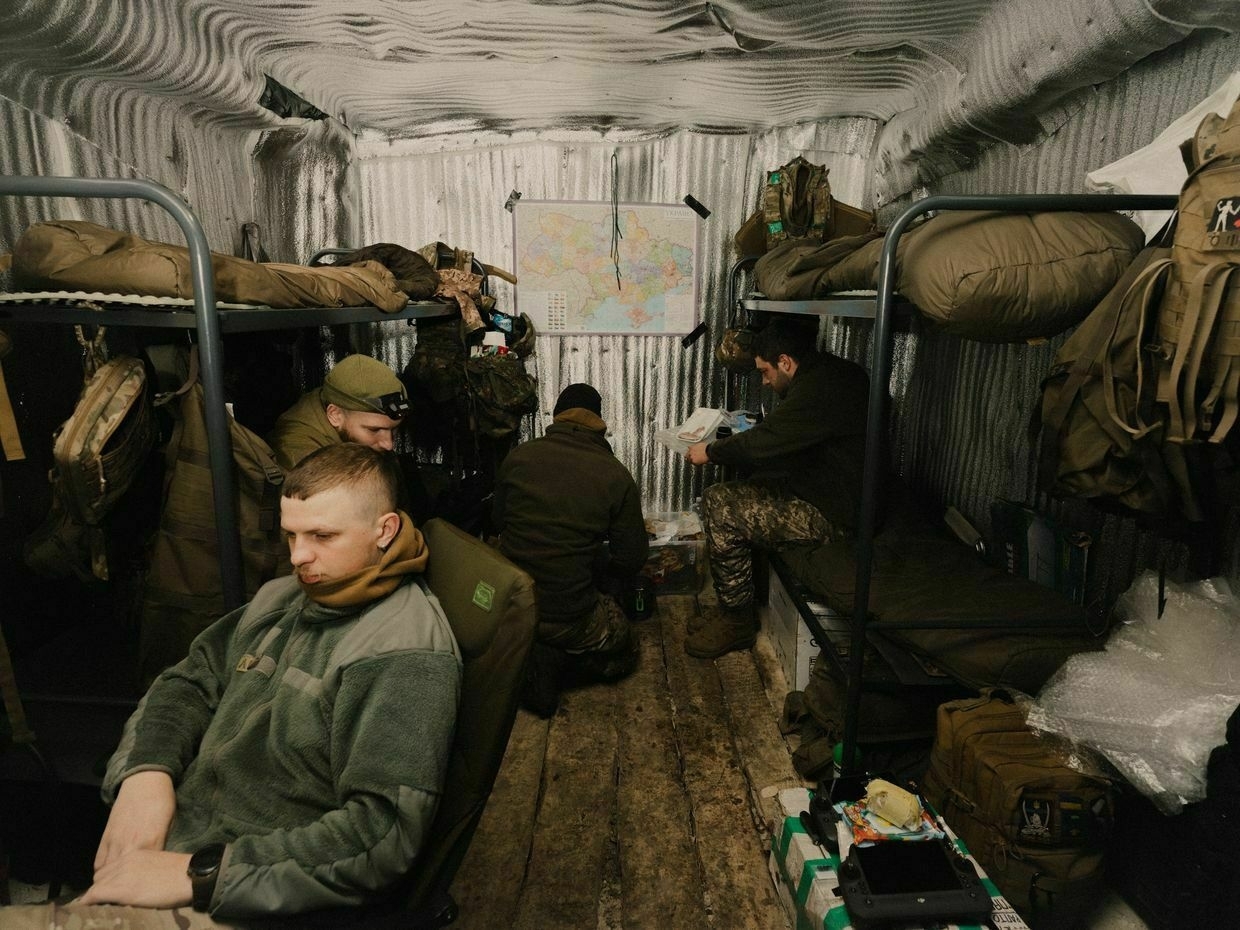
Soldiers of the Achilles Strike Drone Battalion including Ukrainian actor Yurii Felipenko (R) in a dugout near Kupiansk, Kharkiv Oblast, on Dec. 8, 2025. (Aria Shahrokhshahi/The Kyiv Independent) Felipenko’s drone team was featured in a report by the Kyiv Independent on Ukraine’s use of first-person view (FPV) drones against Russian infantry assaults in December 2024 as they defended the area around Kupiansk in Kharkiv Oblast.
Details of Felipenko’s funeral will be announced later, Motrych said.
Russia has killed numerous actors, artists, and writers since the start of the full-scale invasion. Many have fallen on the battlefield while others were killed during attacks on civilian areas.Ukrainian opera tenor and volunteer killed in Sumy OblastVladyslav Horai, a renowned tenor and soloist of the Odesa National Opera, was killed in Ukraine’s northeastern Sumy Oblast while on a volunteer mission, the opera house reported on June 8.The Kyiv IndependentOlena Goncharova
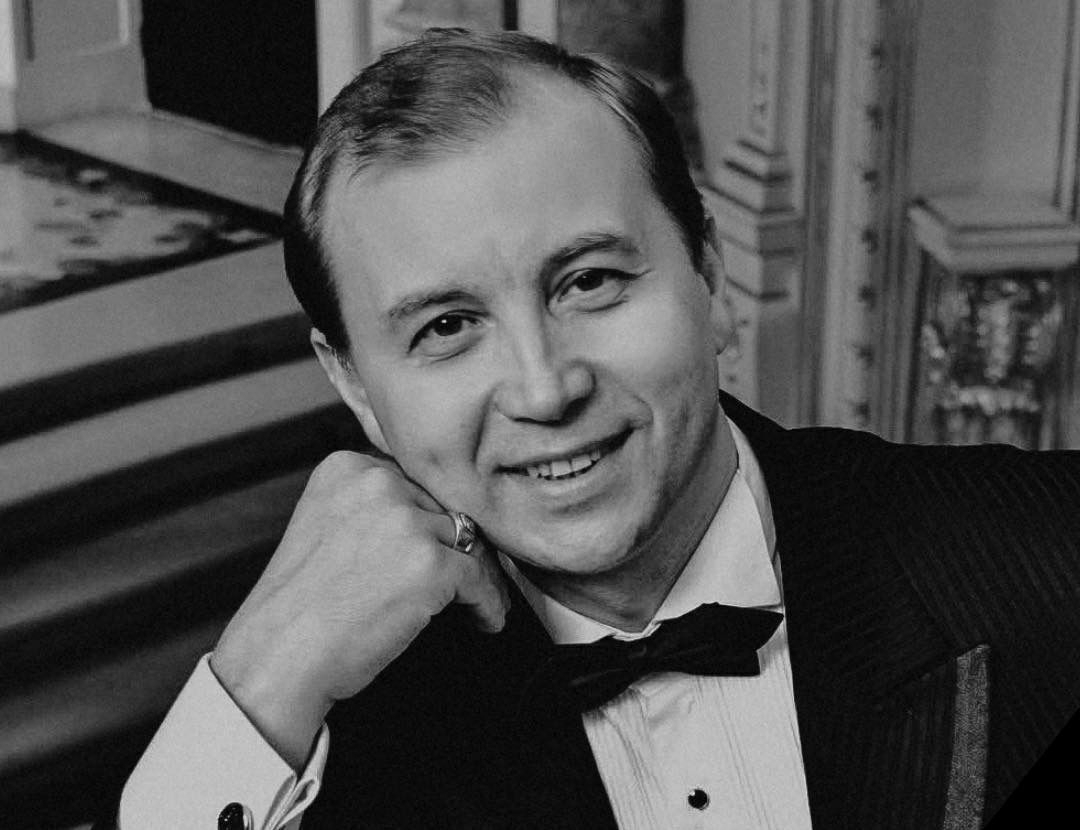
-
Russian strike hit Boeing office in Kyiv in deliberate attack on US business, FT reports

Russia deliberately targeted a building used by the U.S. aerospace and defense giant Boeing in a recent attack on Kyiv, the Financial Times reported on June 15.
Overnight on June 9-10, Russian forces launched hundreds of drones and seven missiles in one of the biggest attacks on Ukraine, damaging buildings across the capital. One of the targets included Boeing’s office, according to two Boeing employees, three Ukrainian officials, and the head of the American Chamber of Commerce (ACC) in Ukraine, whom the FT spoke with.
“This is not just an attack against Ukraine, but also an attack where American business is being hit,” Andy Hunder, President of the ACC in Ukraine, which represents nearly 700 U.S. and international investors and corporate members, told the Kyiv Independent.
“This is a war against a world where American businesses are making money and thriving,” he added.
The strikes on Kyiv came after Ukraine surprised Russia with Operation Spiderweb that saw hundreds of drones target four airbases in Russia and damage 41 war planes. Moscow promised to retaliate in response.
Boeing, one of the largest American companies operating in Ukraine, cooperates with the Ukrainian aerospace and defense company Antonov, with the two companies exploring several joint ventures and opportunities, including in defense.Boeing told the FT that none of its employees were injured in the attack and that it continues to operate in Ukraine, where it employs some 1,000 people.
Antonov has also suffered from Russian strikes, as have other defense production sites. As Ukraine pushes for domestic defense production instead of relying on foreign imports, Ukrainian officials say that Moscow is attempting to hinder Ukraine’s efforts to manufacture arms.
German defense company Rheinmetall opened up a factory in Ukraine last October to produce a batch of Lynx infantry fighting vehicles. Moscow threatened the company, saying it was a legitimate target, although Rheinmetall said its facilities are well protected.
Russia has repeatedly targeted other Western businesses. Nearly half of the ACC’s members have had facilities damaged or destroyed, but 90% still continue to operate in Ukraine, Hunder said.
“The American business community is here, it continues to operate, and it’s united,” he added.With no new US aid packages on the horizon, can Ukraine continue to fight Russia?The U.S. has not announced any military aid packages for Ukraine in almost five months, pushing Kyiv to seek new alternatives. But time is running out quickly as Russian troops slowly advance on the eastern front line and gear up for a new summer offensive. “While Ukraine’s dependence onThe Kyiv IndependentKateryna Hodunova
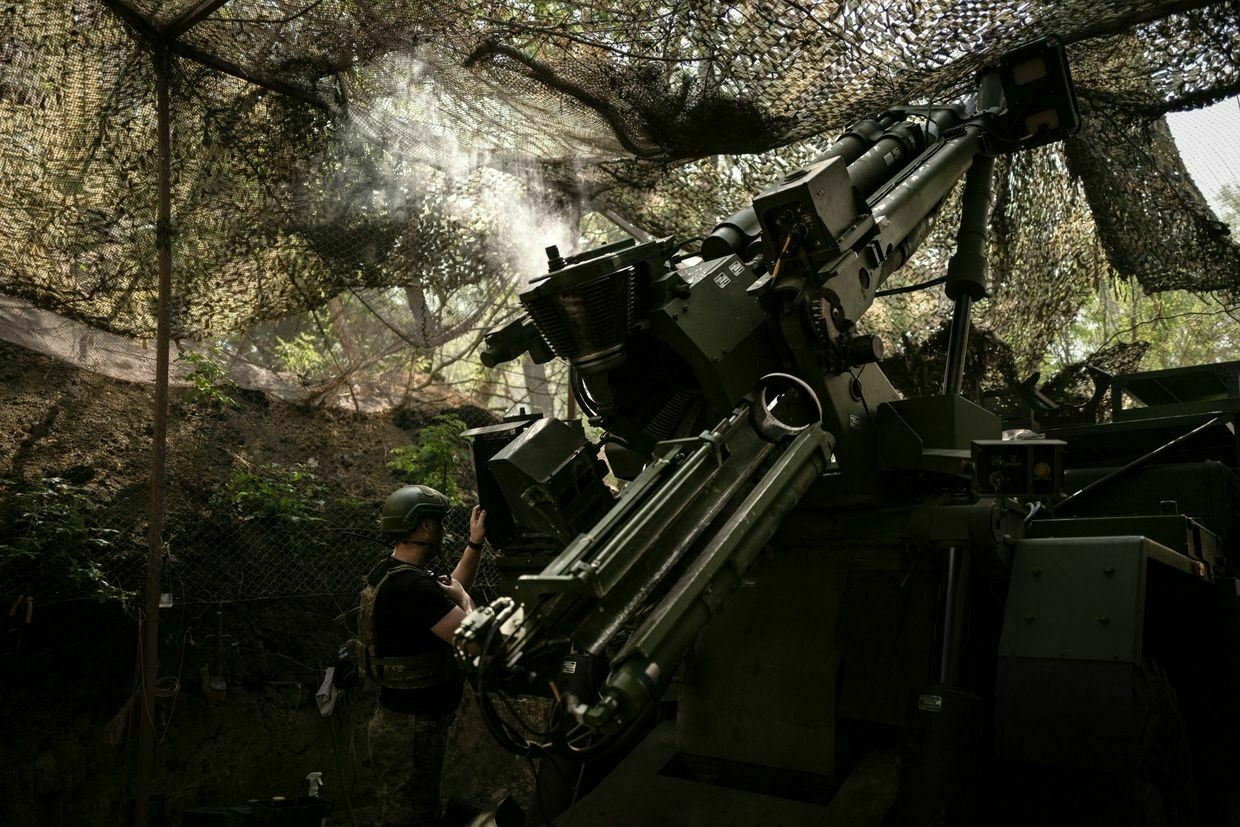
-
With no new US aid packages on the horizon, can Ukraine continue to fight Russia?

The U.S. has not announced any military aid packages for Ukraine in almost five months, pushing Kyiv to seek new alternatives. But time is running out quickly as Russian troops slowly advance on the eastern front line and gear up for a new summer offensive.
“While Ukraine’s dependence on the U.S. has lessened, U.S. aid remains pivotal for maintaining battlefield effectiveness,” Emil Kastehelmi, a Finnish military analyst and member of the Black Bird Group open-source intelligence collective, told the Kyiv Independent.
Since returning to the White House, Donald Trump has chosen an uncanny strategy to end Russia’s war against Ukraine, mostly expecting that Moscow would just stop.
In the meantime, stockpiles of American weapons, which cover nearly 30% of all Western supplies, are dwindling in Ukrainian warehouses, and the recent statement by Defense Secretary Pete Hegseth, who announced that military aid to Ukraine would be cut in 2026, brought Ukraine into even greater turmoil.
“The president and the administration are interested in ‘peace,’ which doesn’t necessarily mean justice, however,” Federico Borsari, a fellow at the Center for European Policy Analysis (CEPA), told the Kyiv Independent.
“This position obviously undermines Ukraine’s negotiating capital while emboldening the Kremlin to continue with its military aggression without real consequences, for now,” Borsari added.
How crucial is US assistance for Ukraine?Throughout the all-out war, the U.S. has provided Ukraine with pivotal weapons and equipment, which account for 30% of all weapons used by Ukrainian forces at the front, according to President Volodymyr Zelensky.
These weapons included multiple launch rocket systems, such as HIMARS and GMLRS guided missiles, which gave Ukraine an advantage on the front line in the summer of 2022. Washington also gave Kyiv the most advanced air defense system available, the Patriot, as well as long-range ATACMS missiles, which Ukrainian forces have used to strike deep into Russia.
“Ukraine’s Armed Forces can withstand the absence of American weapons. But Ukrainian cities can’t.”
Over more than three years of the full-scale war, Washington has provided Ukraine with nearly $74 billion in military aid, according to the Ukraine Support Tracker project conducted by the Kiel Institute for the World Economy (IfW Kiel).
There is also $3.8 billion left over from the Presidential Drawdown Authority (PDA) program that remains unused.
However, considering Trump's previous moves, it is questionable whether Ukraine will receive the remaining assistance promised under the Joe Biden administration in full and on time.
In early June, Washington redirected 20,000 anti-drone missiles intended for Ukraine to the Middle East, and in March, it temporarily suspended all military shipments to Ukraine and the sharing of its intelligence after a heated argument in the Oval Office between Trump, Zelensky, and U.S. Vice President JD Vance.
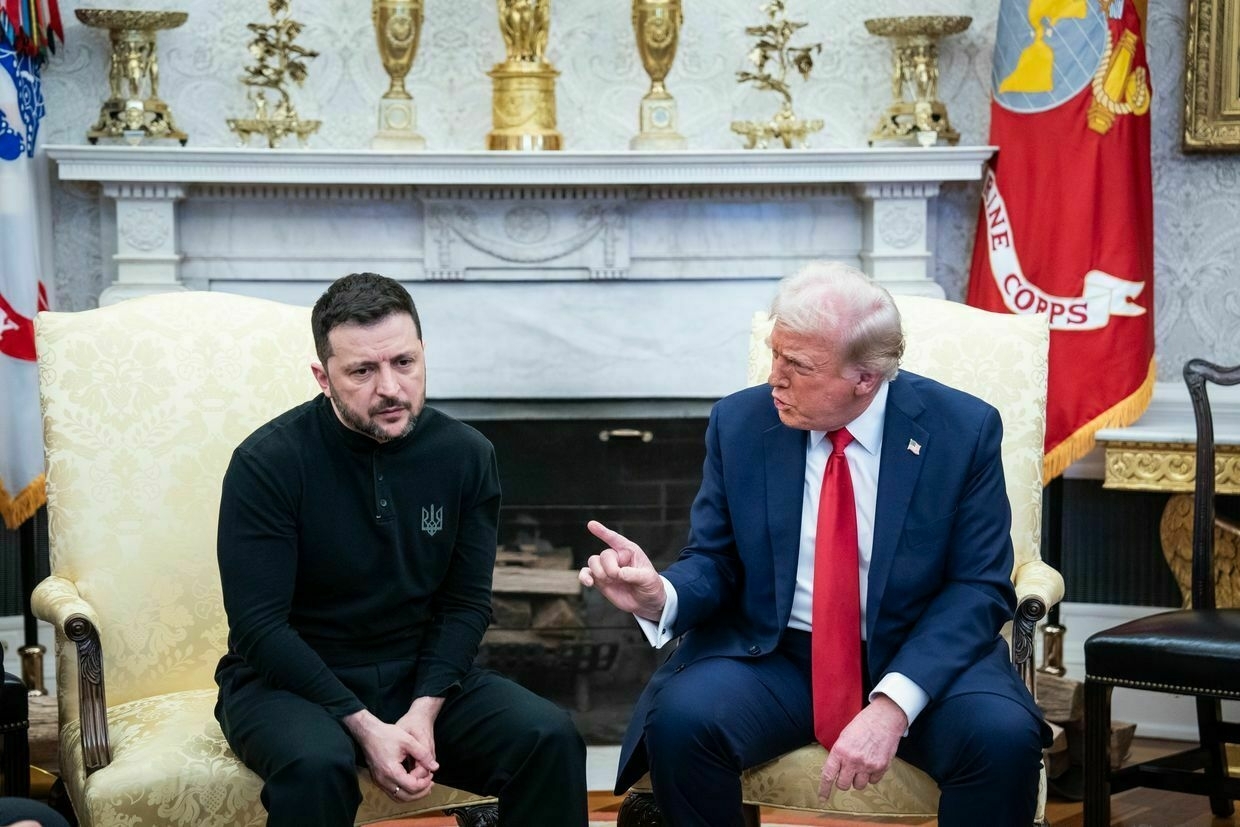
President Donald Trump and President Volodymyr Zelensky in the Oval Office at the White House on Feb. 28, 2025. (Jabin Botsford/The Washington Post via Getty Images) Ukraine has no option but to prepare for the worst if the U.S. refuses to provide further assistance.
"If U.S. military aid stops, it would affect the Ukrainian capabilities significantly, but the impact would be gradual, not instant, as there are stockpiles and there would be attempts to solve issues by alternative ways," military analyst Kastehelmi said.
"The effect would be a constantly degrading set of capabilities, but the outcome would depend on European reaction and efforts to fix the most critical issues," he added.
From buffer zone to new front: Russia pushes deeper into Sumy OblastIn March 2025, as Ukrainian forces made their final retreat from Sudzha in Russia’s Kursk Oblast, new grey spots began to appear on open-source maps on the other side of the state border, in Ukraine’s Sumy Oblast. For the first time since 2022, when Moscow’s forces retreatedThe Kyiv IndependentFrancis Farrell
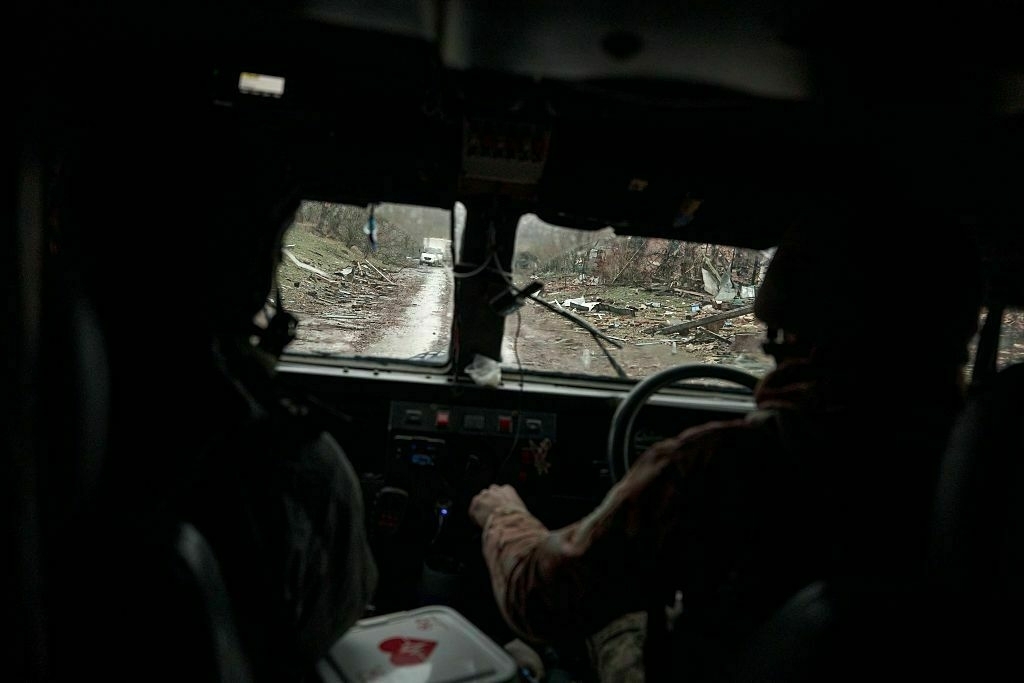
Searching for alternativesFollowing the temporary suspension of U.S. military aid and intelligence sharing with Ukraine, Kyiv's European partners said they were ready to do more to meet its war needs.
Amid the looming Russian threat, the European Commission also presented on March 4 the ReArm Europe plan, which aims to strengthen the continent's defense capabilities. The plan is designed for 10 years and is worth 800 billion euros ($842 billion) in defense expenditures, including 150 billion euros ($158 billion) in loans to EU member states to invest in their defense sectors.
"We may soon see contracts being signed for the direct purchase of weapons, likely using the funds from frozen Russian assets or even funds from European partners."
According to European Commission President Ursula von der Leyen, the initiative will also allow EU countries to increase their support for Ukraine "significantly."
Yet, this spring, Europe was far from ready to fully replace U.S. aid, according to a study by the Kiel Institute.
The Kiel Institute estimated that to reach the target level of support for Ukraine, Germany needed to increase its annual spending from $ 6.7 billion to $ 10.2 billion, France from $ 1.7 billion to $ 6.7 billion, Italy from $ 905 million to $ 5.1 billion, Spain from $565 million to $ 3.4 billion per year, and the U.K. from $ 5.6 billion to $ 7.3 billion.
"Our data show that Europe would be able to compensate for much of the U.S. aid — but only if policymakers act decisively. So far, Europe has been moving too slowly in this area," said Christoph Trebesch, research director at the Kiel Institute for the World Economy.
Ukraine is also trying to organize direct purchases of U.S. weapons. In April, Zelensky said that Kyiv was ready to spend $50 billion on the arms purchase, but as of early June, no contract had been publicly announced.
"We may soon see contracts being signed for the direct purchase of weapons, likely using the funds from frozen Russian assets or even funds from European partners. This more transactional and business-oriented approach is very aligned with Trump's vision, so it could emerge soon," military expert Borsari said
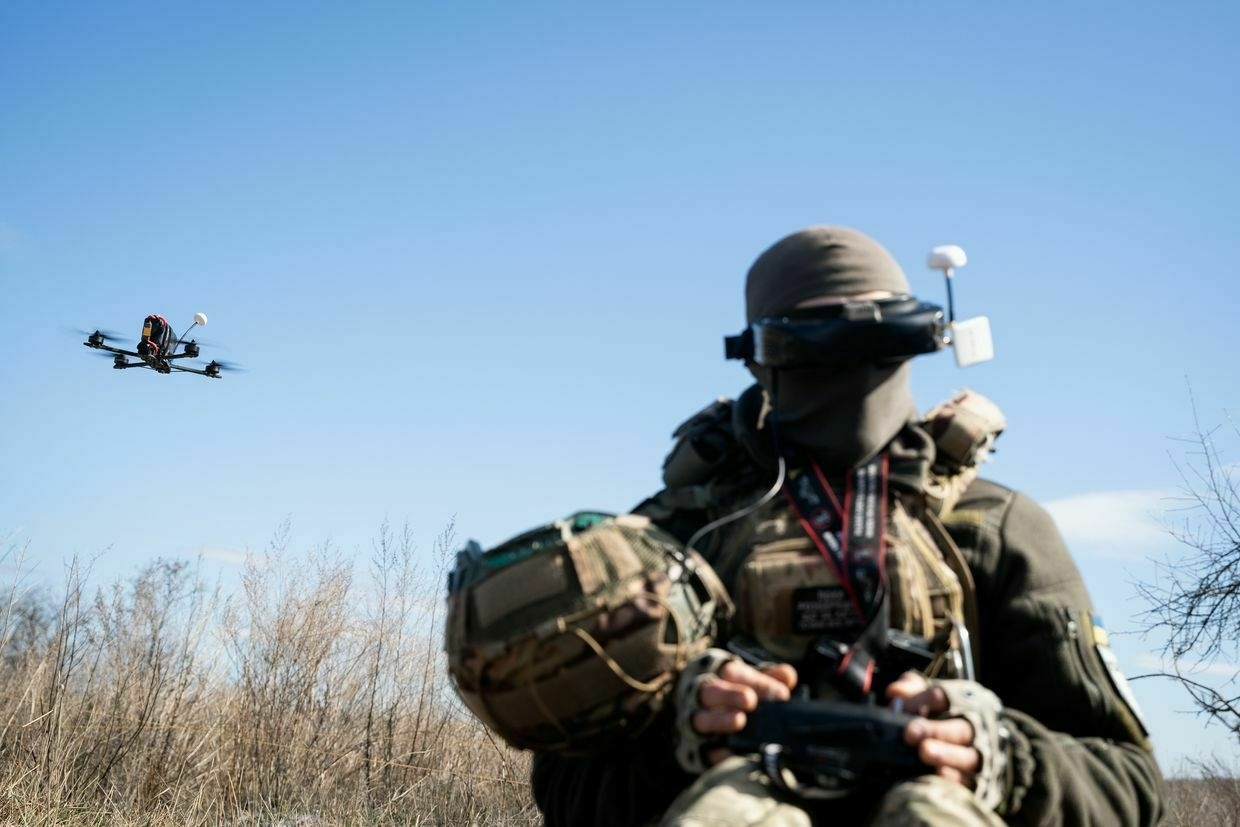
A Ukrainian soldier flies an FPV drone in Kharkiv Oblast, Ukraine, on March 19, 2025. (Alfons Cabrera/NurPhoto via Getty Images) "But this aspect ultimately depends on a political decision from the new administration, which has been notoriously slow in unlocking new support for Ukraine," he added.
Dependence on American and European partners is also gradually being overcome by increasing domestic military production and foreign partners' investments in the Ukrainian defense industry.
In February, Zelensky said that in 2025, Ukraine plans to increase the amount of its own weapons supplied to the army from 40% to 50%. In March, Prime Minister Denys Shmyhal also announced that Ukraine would be able to provide itself with 100% of its own artillery this year.
Ukraine has also significantly improved its drone production, as demonstrated by Operation Spiderweb, which used FPV (first-person-view) drones hidden in trucks in Russia to destroy 41 Russian military aircraft.
Mykhailo Samus, military expert and director of the New Geopolitics Research Network, told the Kyiv Independent that Ukrainian specialists have also learned how to repair American weapons without involving foreign specialists, which allows them to return to service faster without involving third parties' assistance.
According to the expert, the termination of U.S. military aid will not significantly affect the events at the front line. Yet, there is still one type of weapon that Ukraine cannot replace either on its own or with the help of its European allies.
"The only thing that makes us critically dependent on the U.S. is the Patriot air defense system," Samus said.
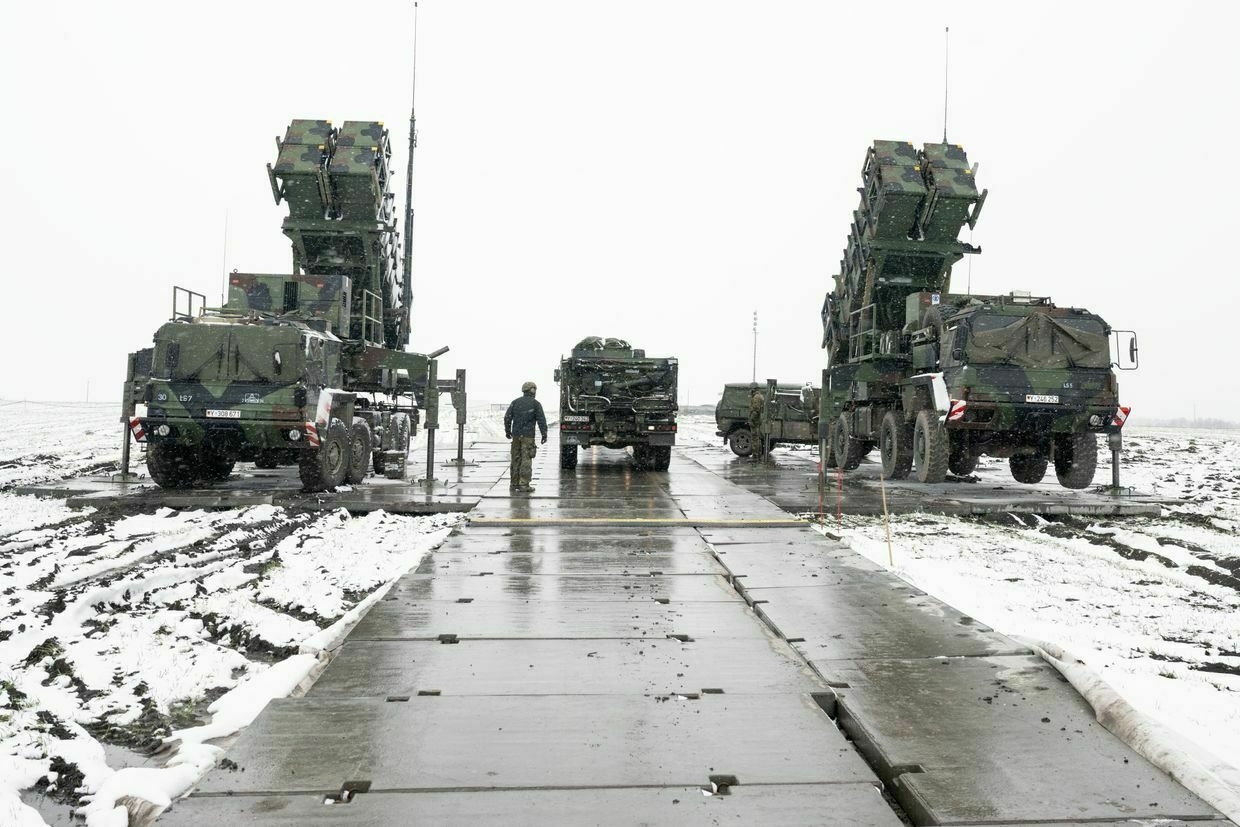
Trailers with launchers for guided missiles of the Bundeswehr’s Patriot air defense system stand in a field in southeastern Poland on April 3, 2023. (Sebastian Kahnert / dpa / picture alliance via Getty Images) "Ukraine's Armed Forces can withstand the absence of American weapons. But Ukrainian cities can't, as Europe is just launching a mass production of SAMP/T systems similar in characteristics to the Patriot."
The parliament's Defense Committee Secretary Roman Kostenko added that the U.S. has been deeply involved in cooperation with Ukraine's special agencies and the Armed Forces over the years, and "a lot depends on them."
Kostenko said that without the help from allies, Ukrainian troops would not be able to monitor the deployment and launch of ballistic missiles, which would significantly reduce the amount of time Kyiv would have to respond to potential attacks.
The termination of U.S. intelligence could also affect long-range strikes deep into Russia, as Ukrainian forces use U.S. satellite data to identify the location of Russian military equipment and troops. However, European partners can still provide help.
"American intelligence can be replaced," Samus said. "But it will require money, time, and political will."
Trump gave Putin a ‘two-week’ deadline to consider peace in Ukraine. Instead, Russia just launched more drones.A “two week” deadline imposed by U.S. President Donald Trump to see if Russia is serious about peace in Ukraine has come and gone, with Moscow’s escalation of attacks on civilians during this period failing to draw the slightest condemnation from the White House. “We’re going to find outThe Kyiv IndependentYuliia Taradiuk
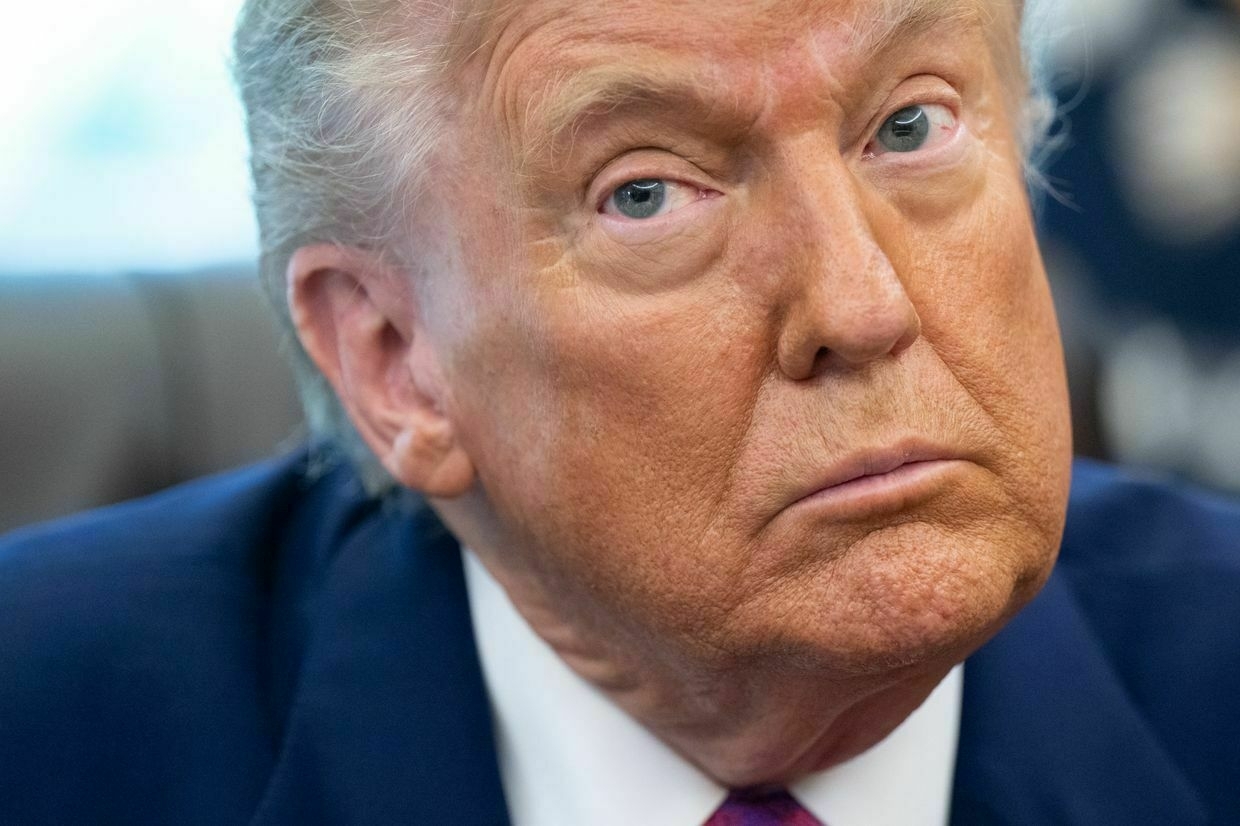
-
Russia hits 1 million losses in Ukraine | Ukraine This Week

Ukraine This Week with host Anna Belokur returns to break down the top stories of the week, including Russia’s advances in Sumy Oblast. This week also marks Russia’s 1 million casualties in its war on Ukraine.
-
Another 1,200 bodies of fallen Ukrainians return home after exchange with Russia

Ukraine recovered another 1,200 bodies following the latest round of repatriation efforts, following agreements with Russia in Istanbul, the Coordination Headquarters for the Treatment of Prisoners of War said on June 15.
The last repatriation took place on June 14 when the bodies of 1,200 fallen Ukrainians were given back. Before that, 2,412 bodies were returned on June 13 and June 11 respectively, following the talks in Istanbul on June 2.
Law enforcement investigations and institutions from Ukraine’s Interior Ministry will examine and identify the bodies in the near future, the coordination headquarters said. The bodies reportedly include military personnel.
The repatriation operation was coordinated by the Coordination Headquarters for the Treatment of Prisoners of War alongside the Security Service of Ukraine (SBU), the Ombudsman’s Office, the Armed Forces, the Interior Ministry, and other government and defense bodies. The International Committee of the Red Cross also provided assistance during the process.While the Istanbul talks failed to foster a ceasefire, both sides agreed to new POW exchanges. Ukraine has long pushed for an “all-for-all”prisoner exchange to bring home all Ukrainian captives, but Moscow has resisted such a comprehensive deal.
After the talks, Russia said it would transfer 6,000 bodies to Ukraine, including soldiers and officers. Ukrainian President Volodymyr Zelensky said Ukraine would need to check the bodies that Russia is willing to return, as only 15% of the 6,000 have been identified.
“We had instances when they returned bodies that later were identified as their own,” Zelensky said on June 2.Russia transfers 50 Ukrainian children to so-called ‘rehab camp’ in Kalmykia, Kyiv saysRussia has transferred 50 children from the occupied Antratsyt district of Luhansk Oblast to a so-called rehabilitation camp in Kalmykia, Ukraine’s Center for Countering Disinformation reported on June 14.The Kyiv IndependentOlena Goncharova

-
Ukraine catches Russian agent secretly filming airfield, Ukrainian Security Service says
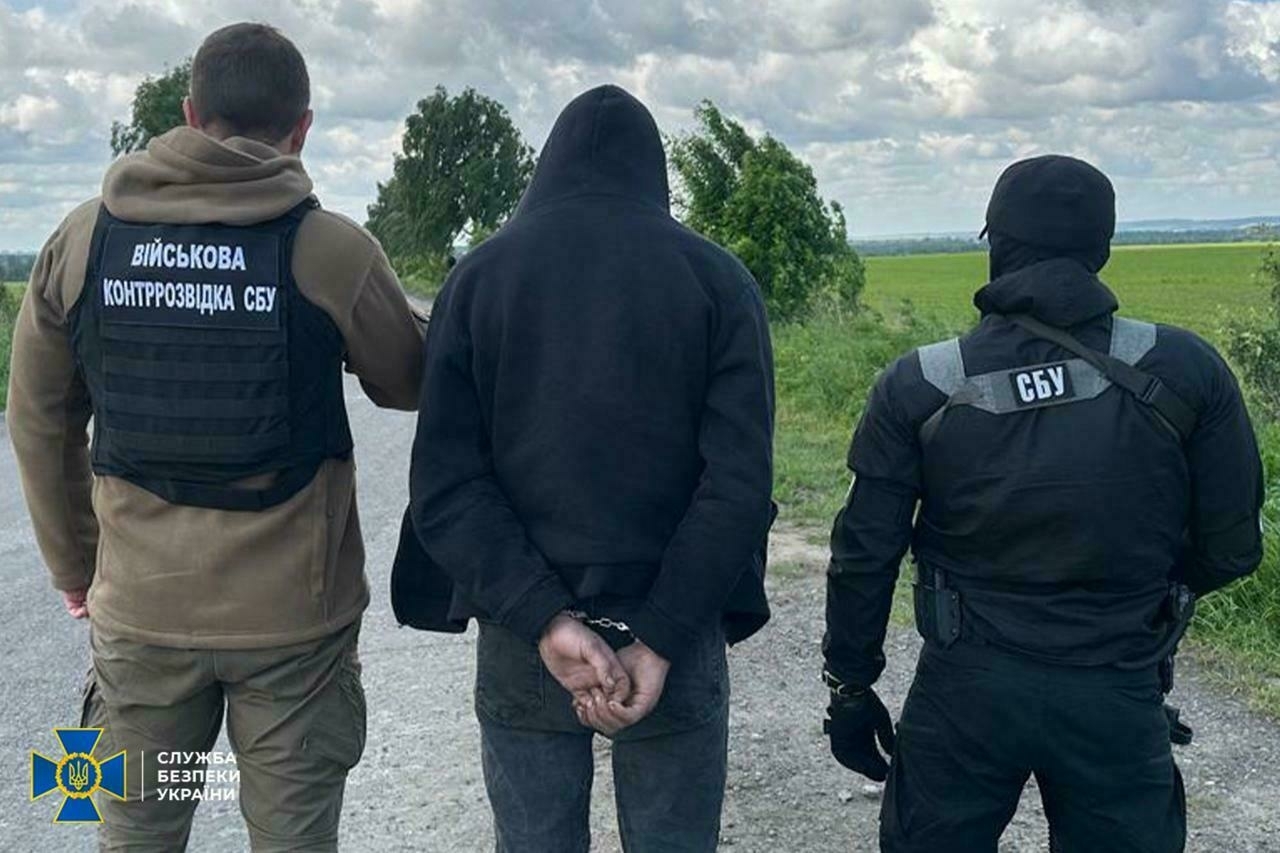
Ukraine’s Security Service (SBU) caught a Russian agent red-handed as he was filming a military airfield in preparation for a Russian strike, the agency reported on June 15.
According to the SBU, the Russian Federal Security Service (FSB) recruited the unemployed 24-year-old via the Telegram messaging app to collect coordinates for air attacks on airfields and logistic depots.The FSB had allegedly instructed him to find military facilities and carry out reconnaissance on the ground in exchange for “easy money.”
The man was detained outside an airfield in Rivne Oblast while filming its outer perimeter with a hidden camera in his car. The SBU seized a phone and the camera on the scene, while other evidence was taken from the agent’s apartment.
If found guilty, he faces life imprisonment for high treason.
The SBU regularly announces it has foiled Russian agents and terrorist plots against military and civilian targets. The FSB usually targets unemployed people, those with criminal records, or addicts, according to the SBU’s data.In April, the SBU detained an instructor at a training center in Lviv Oblast who was planning to assassinate the base’s commanders. That same month, the SBU detained nine FSB agents, including five minors, for plotting terrorist attacks in central and eastern Ukraine.
More than a fifth of FSB recruits in Ukraine are minors.Power cut off in Russia’s Kaliningrad in sabotage operation, Ukrainian military intelligence saysIn the early hours of June 14, Ukrainian agents drained the coolant from the substation’s power transformer before setting the facility on fire.The Kyiv IndependentDominic Culverwell
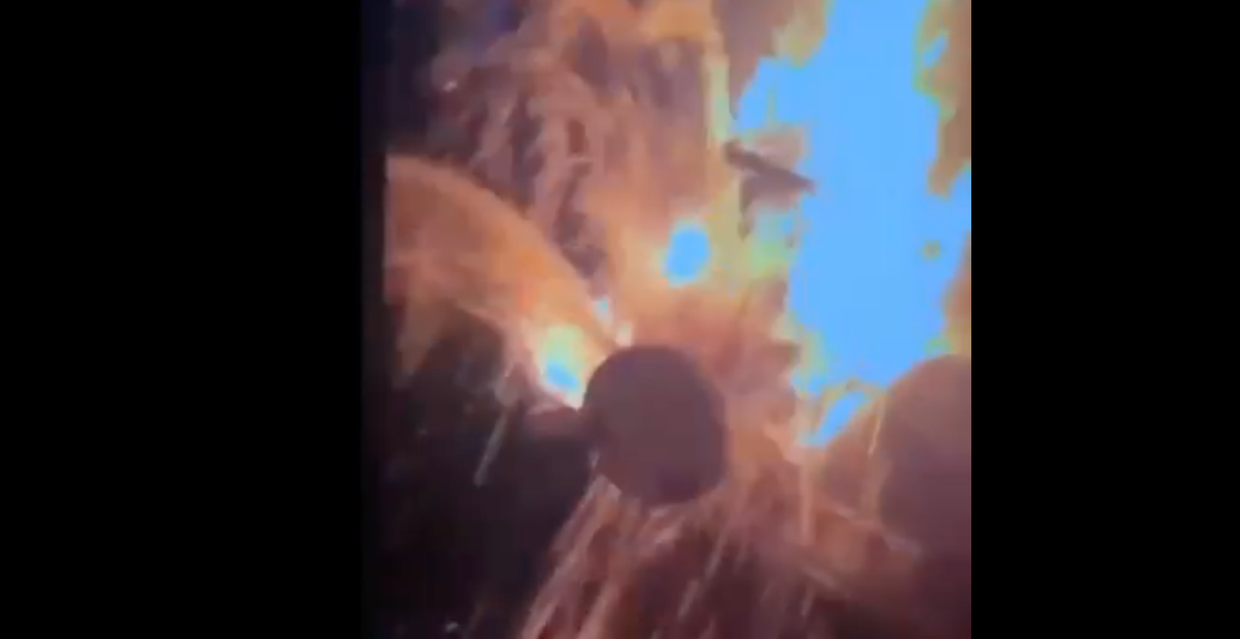
-
Power cut off in Russia's Kaliningrad in sabotage operation, Ukrainian military intelligence says
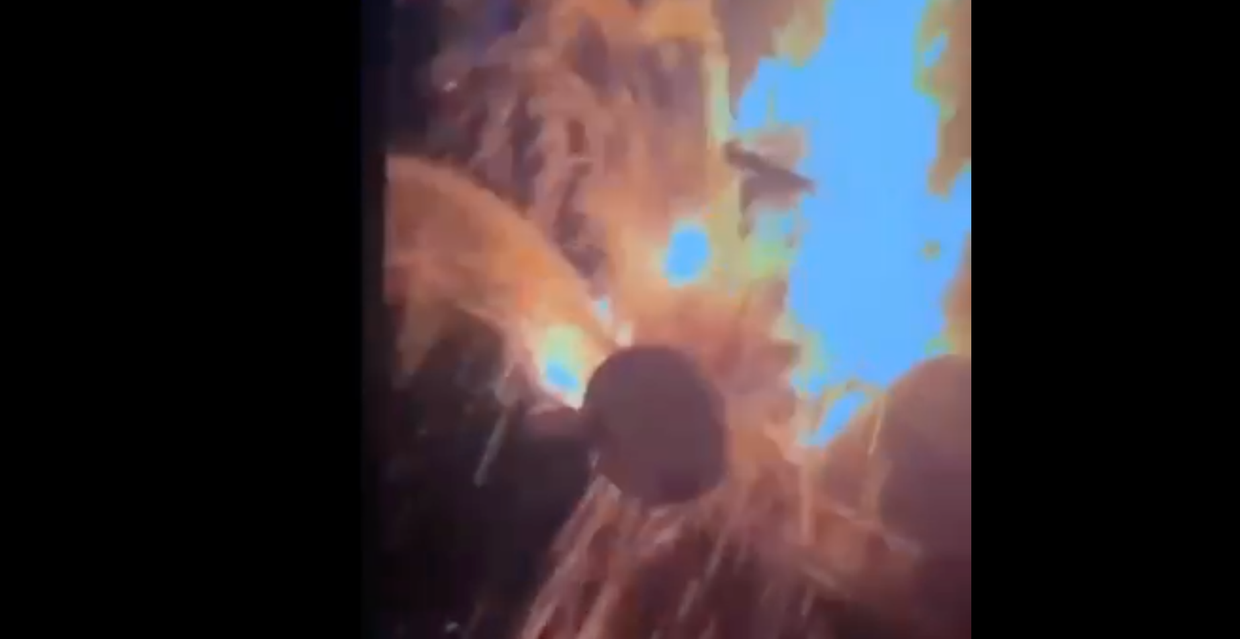
Ukraine’s military intelligence (HUR) ignited an electrical substation during a sabotage operation in the Russian city of Kaliningrad, causing $5 million in damage and cutting electricity to a military production site, a source in HUR told the Kyiv Independent.
In the early hours of June 14, Ukrainian agents drained the coolant from the substation’s power transformer before setting the facility on fire. The inferno inflicted major damage on the facility and caused a power cut, impacting nearby Russian military sites.
“We once again remind you that Russia no longer has a rear either in the east, in the west, or anywhere else on the planet. Everything Russian involved in the war against Ukraine will burn, sink, and be destroyed regardless of its level of protection or location,” the source said.0:00/Ukrainian agents sabotage an electrical substation in Kaliningrad, Russia. June 14, 2025. (HUR) Ukraine continues to carry out numerous secretive attacks within Russia and occupied Ukrainian territories, targeting military sites, like airfields, as well as key infrastructure like railways and oil refineries.
The attacks involve HUR, Ukraine’s Security Service (SBU) as well as partisan and sabotage groups.
HUR was behind explosions near Desantnaya Bay in Russia’s far eastern Vladivostok on May 30, which reportedly damaged military personnel and equipment. The operations took place approximately 6,800 kilometres from the Ukrainian border, making it Ukraine’s furthest incursion into Russian territory, if confirmed.
On June 1, the SBU launched Operation Spiderweb, a game-changing drone attack on four key Russian military airfields, damaging 41 planes, including heavy bombers and rare A-50 spy planes.Ukrainian drones destroy Russian air defense systems in occupied Zaporizhzhia Oblast, military intelligence saysUkraine’s military intelligence (HUR) destroyed three Russian air defense systems using drones in the occupied Zaporizhzhia Oblast on June 14, HUR says.The Kyiv IndependentVolodymyr Ivanyshyn
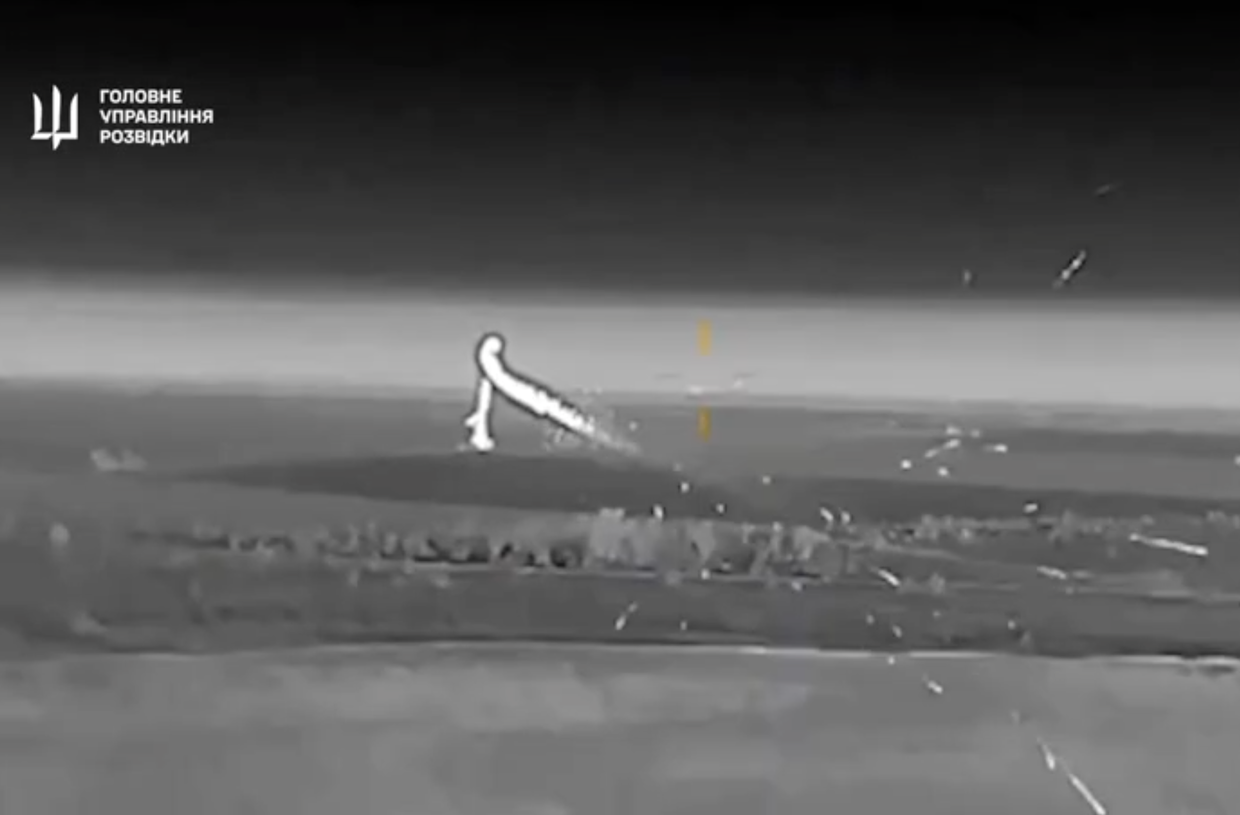
-
Russian shelling kills one in Kherson, mass attack hits infrastructure in Poltava Oblast
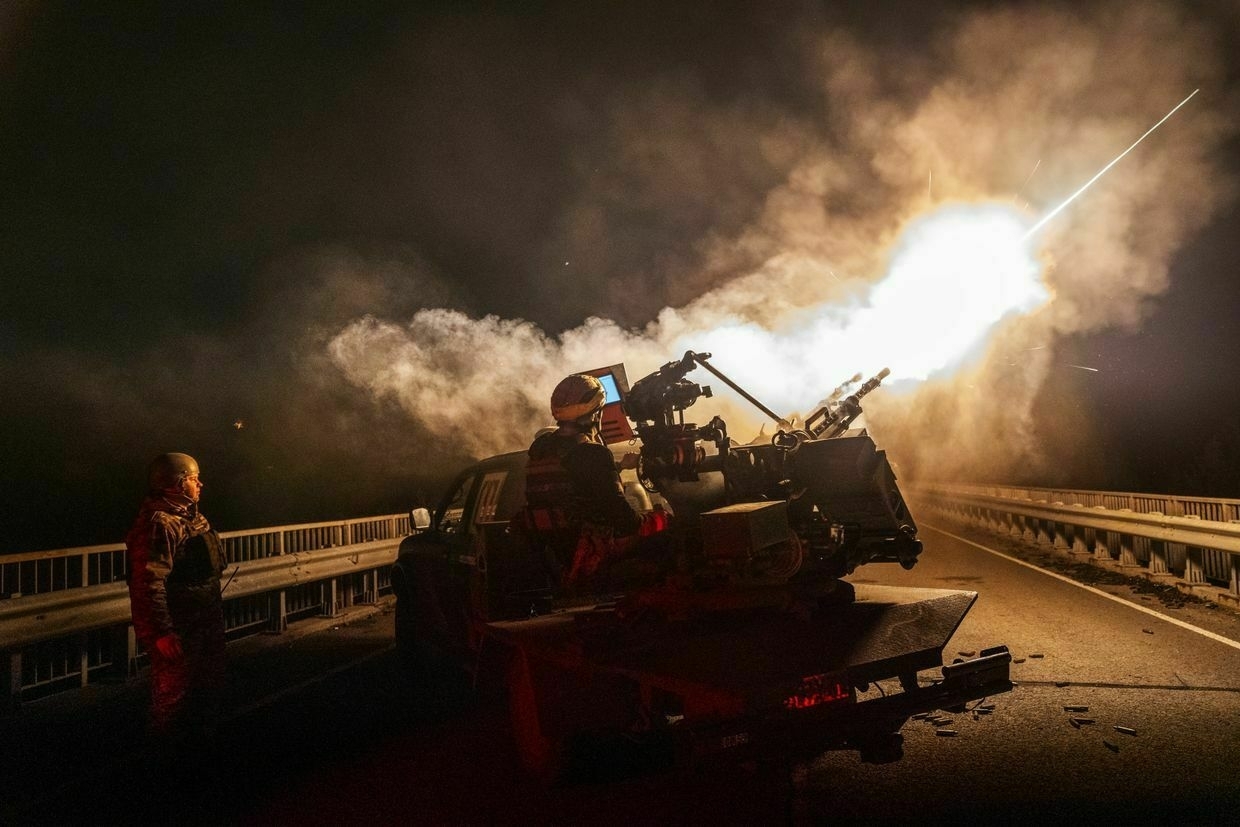
Russia attacked Ukraine with nearly 200 missiles and drones and shelled residents in Kherson and Donetsk oblasts, killing one and injuring three, Ukrainian authorities reported on June 15.
Russian forces unleashed drones, artillery, and airstrikes on Kherson Oblast and the city over the last day, killing one person and injuring another, the oblast administration reported. Russian attacks damaged apartments, homes, and gas pipelines, as well as other infrastructure.
In Donetsk Oblast, Russian attacks injured two people in Pokrovsk and Myrnohrad, regional governor Vadym Filashkin reported.
Russia’s combined mass missile and drone strikes largely targeted Kremenchuk in Poltava Oblast. No one was injured or killed, but the attacks hit energy and agricultural facilities, said Poltava governor Volodymyr Kohut.
Of 183 drones Russia launched, Ukrainian air defense neutralized 159, the Air Force said in their. Ukraine also shot down 2 Kinzhal air-launched ballistic missiles and six out of eight cruise missiles.
Drones were also spotted flying through Kyiv and Kyiv Oblast, Chernihiv, Sumy, Dnipropetrovsk, Kirovohrad, Mykolaiv, Zaporizhzhia, and Donetsk oblasts.
Despite talks of peace negotiations, Russia has amped up its drone attacks on Ukraine over the last month. On May 26, Russia launched 355 drones at Ukraine, a record that was broken on June 1 with 472 drones, and on June 9, when Russia fired 479 drones and 20 missiles against Ukrainian cities.Trump gave Putin a ‘two-week’ deadline to consider peace in Ukraine. Instead, Russia just launched more drones.A “two week” deadline imposed by U.S. President Donald Trump to see if Russia is serious about peace in Ukraine has come and gone, with Moscow’s escalation of attacks on civilians during this period failing to draw the slightest condemnation from the White House. “We’re going to find outThe Kyiv IndependentYuliia Taradiuk
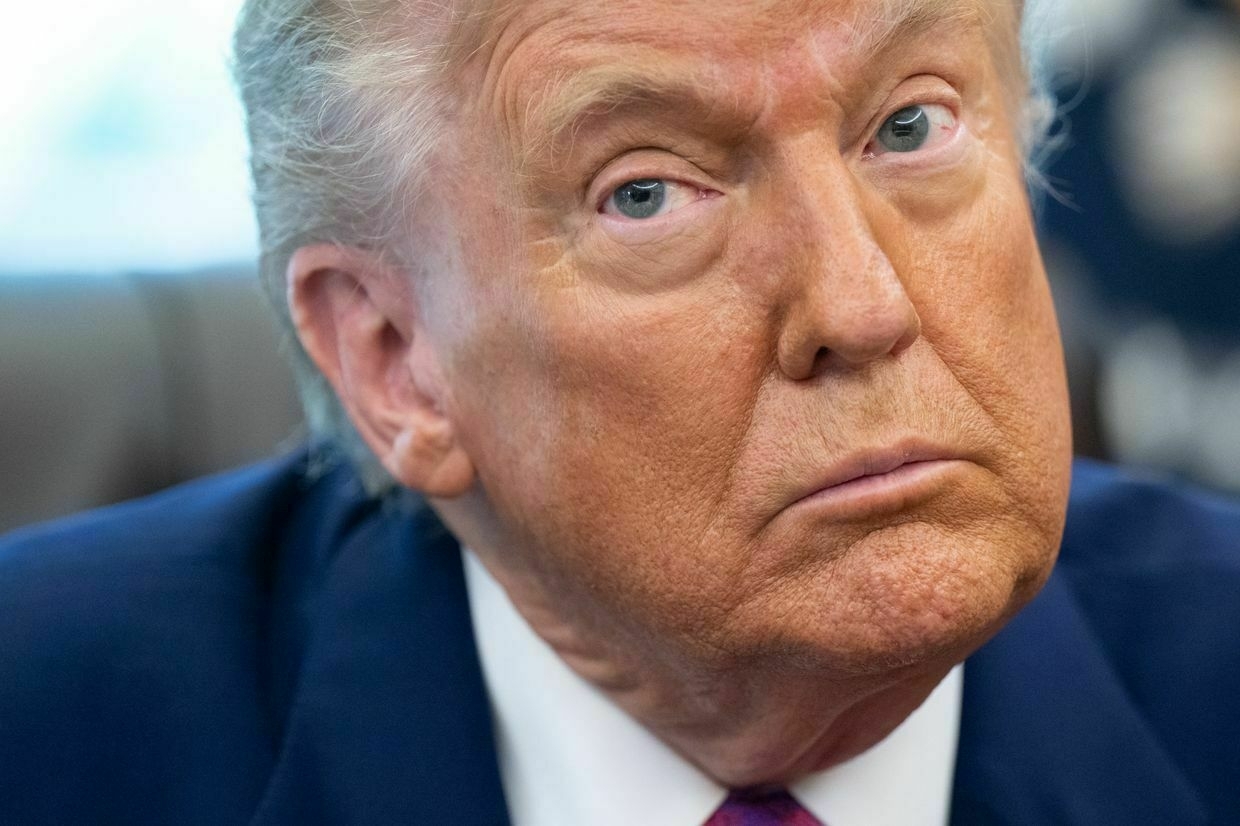
-
General Staff: Russia has lost 1,003,860 troops in Ukraine since Feb. 24, 2022
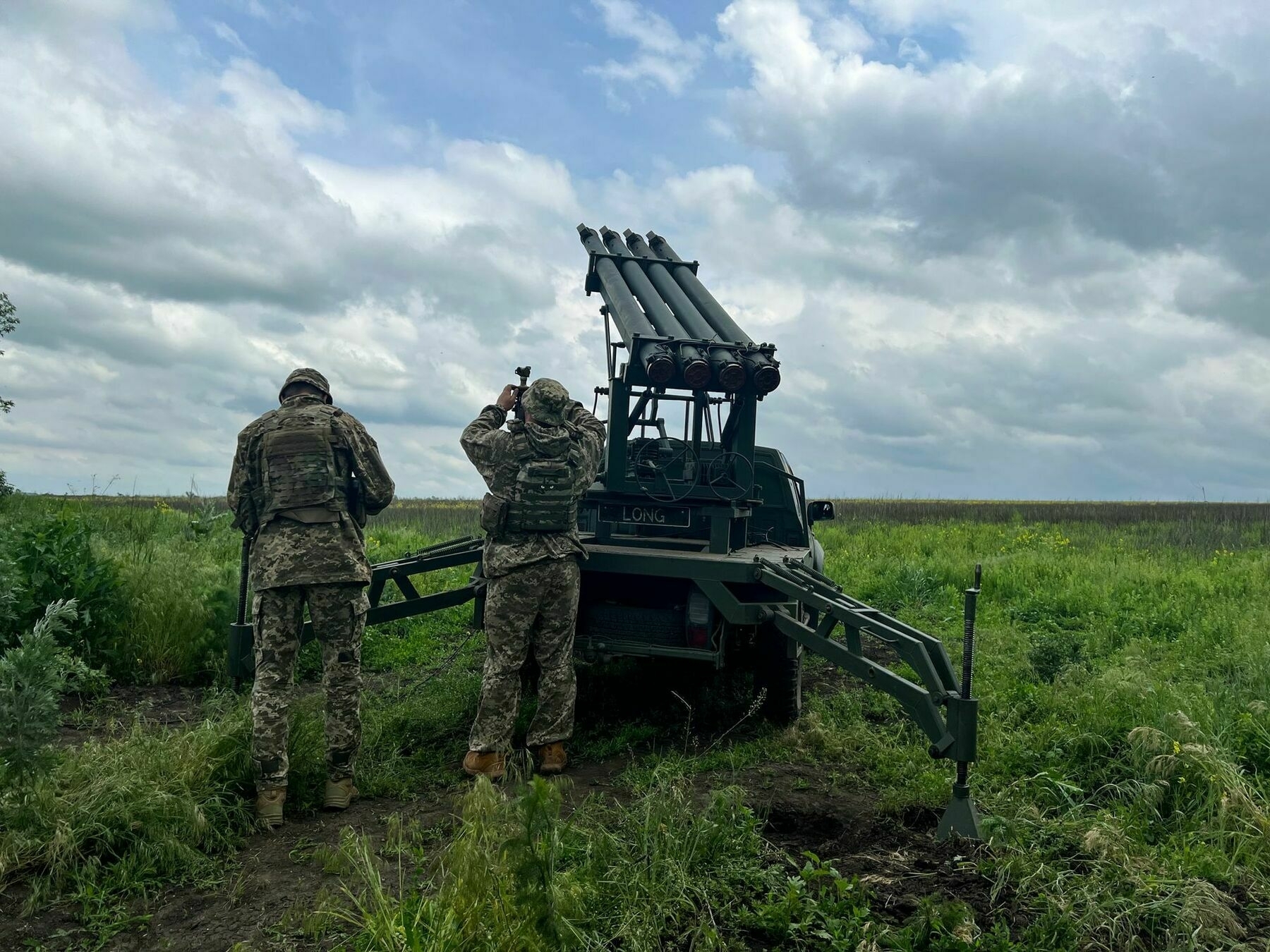
Russia has lost 1,003,860 troops in Ukraine since the beginning of its full-scale invasion on Feb. 24, 2022, the General Staff of Ukraine’s Armed Forces reported on June 15.
The number includes 1,170 casualties that Russian forces suffered just over the past day.
According to the report, Russia has also lost 10,937 tanks, 22,804 armored fighting vehicles, 52,017 vehicles and fuel tanks, 29,190 artillery systems, 1,418 multiple launch rocket systems, 1,186 air defense systems, 416 airplanes, 337 helicopters, 40,709 drones, 3,337 cruise missiles, 28 ships and boats, and one submarine.
From buffer zone to new front: Russia pushes deeper into Sumy OblastIn March 2025, as Ukrainian forces made their final retreat from Sudzha in Russia’s Kursk Oblast, new grey spots began to appear on open-source maps on the other side of the state border, in Ukraine’s Sumy Oblast. For the first time since 2022, when Moscow’s forces retreatedThe Kyiv IndependentFrancis Farrell
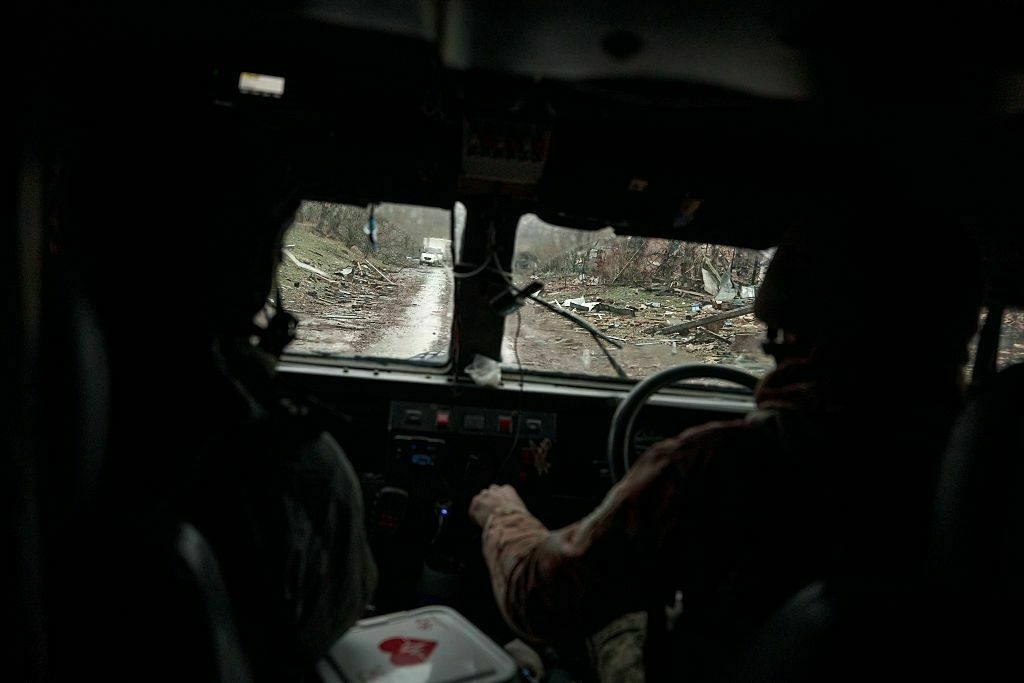
-
Israel strike reportedly hits Iran’s gas sector, halting production at world’s largest field
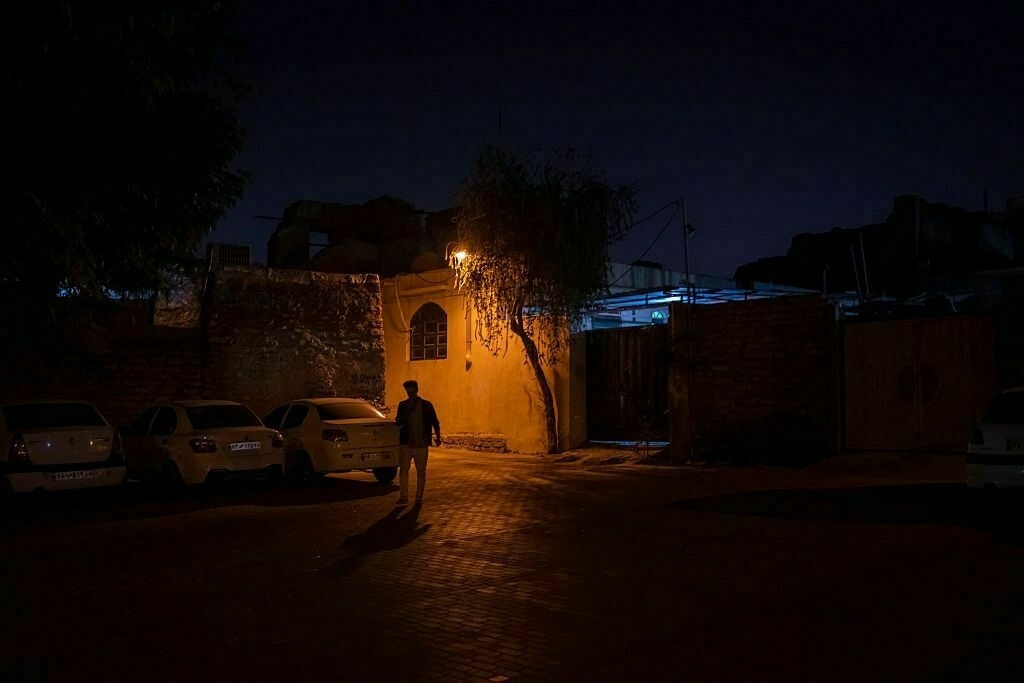
Iran has partially suspended production at the South Pars gas field — the world’s largest — after an Israeli airstrike triggered a fire at the site, the semi-official Tasnim news agency reported on June 14, according to Reuters. If confirmed, it would mark the first Israeli strike targeting Iran’s vital oil and gas infrastructure.
The South Pars field, located offshore in southern Bushehr province, is responsible for the bulk of Iran’s gas output. Tehran shares the field with Qatar, which refers to its portion as the North Field. A strike on South Pars represents a significant escalation, coming after oil prices surged 9% on June 13 following Israel’s initial wave of attacks, which had not targeted energy infrastructure, Reuters reports.
Israel launched its air offensive against Iran on June 13, killing commanders and scientists and bombing nuclear sites, in what it described as an effort to prevent Tehran from developing nuclear weapons.
The Iranian oil ministry said the fire caused by the strike has been extinguished. According to Tasnim, the fire broke out in one of four units of Phase 14 at South Pars, halting the production of 12 million cubic meters of gas.
Iran, the world’s third-largest gas producer after the United States and Russia, produces around 275 billion cubic meters of gas per year, about 6.5% of global output.
Due to international sanctions, the country consumes most of this domestically. Qatar, which operates the majority of the shared field with support from global firms such as Exxon and Shell, produces 77 million tonnes of liquefied natural gas annually, supplying both European and Asian markets.
Israel-Iran war could provide economic boost Russia needs to continue fight against UkraineIsrael’s “preemptive” strikes against Iran targeting the country’s nuclear program and killing top military officials could have far-reaching implications for Ukraine and could boost Russia’s ability to continue its full-scale invasion, experts have told the Kyiv Independent. Iran has been one of Russia’s staunchest allies throughout the war, providing thousandsThe Kyiv IndependentChris York
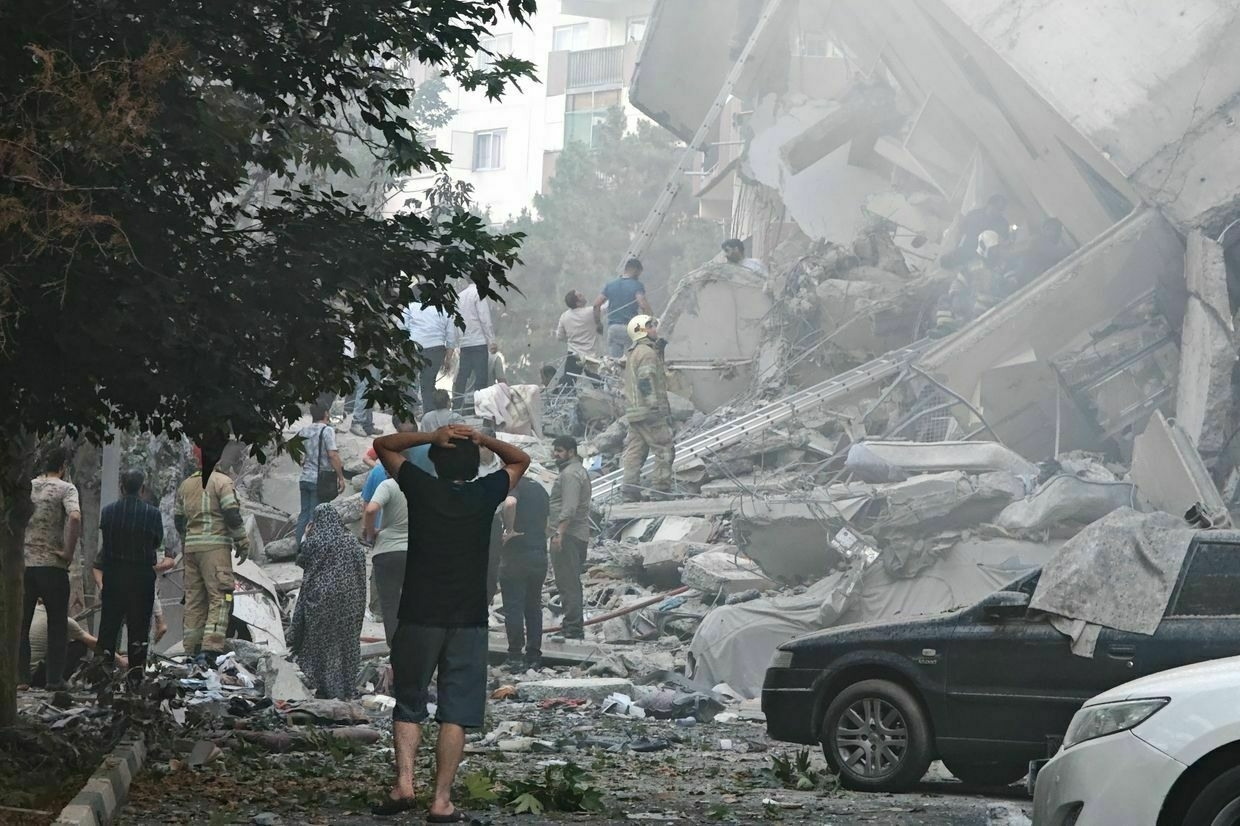
-
Berlin wants more defense, no budget hike in EU plan, FT reports
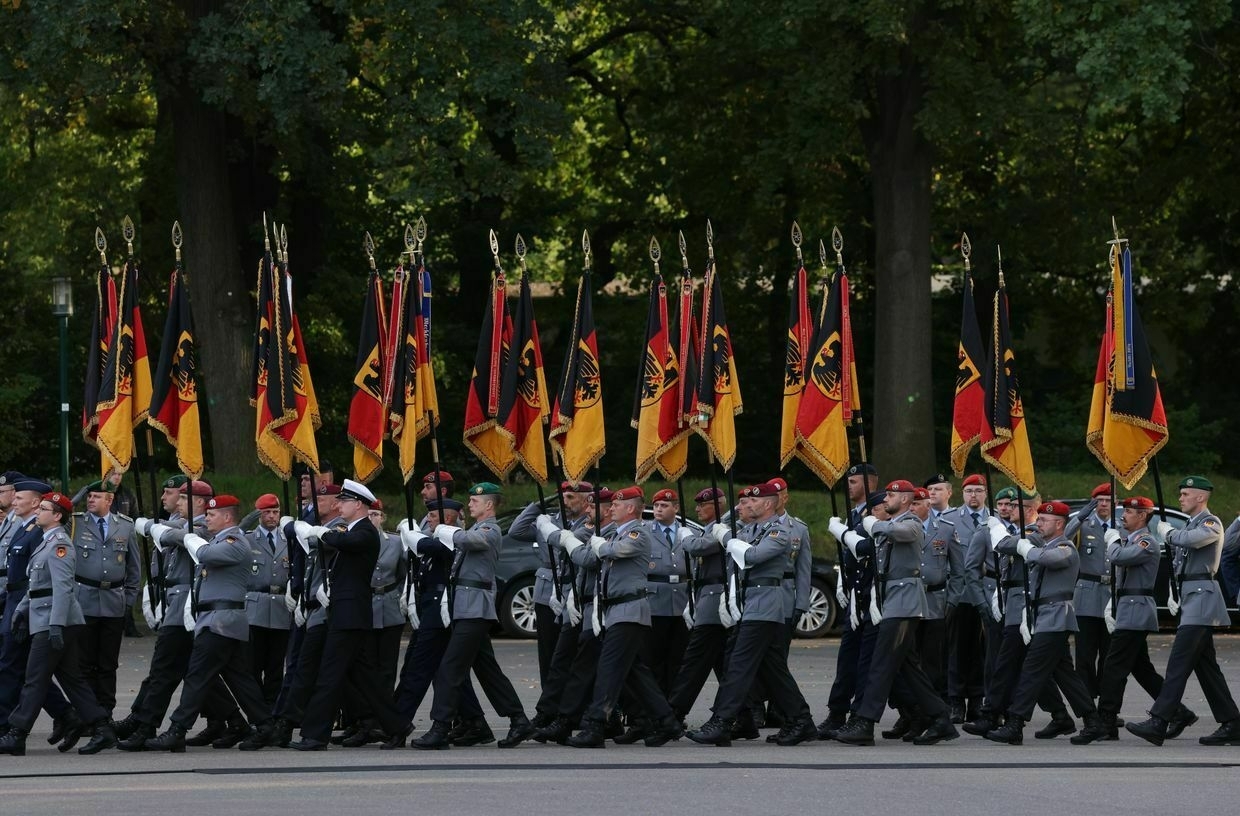
Germany aims to prioritize defense spending in the next EU budget while firmly opposing any increase in national contributions, according to a position paper obtained by the Financial Times (FT).
As the bloc’s largest economy and top net contributor, Berlin wants EU funds to support joint arms procurement and help expand production capacity among European weapons manufacturers.
The paper reportedly reflects Germany’s broader shift toward higher domestic military spending in response to Russia’s ongoing threat and amid calls by U.S. President Donald Trump for Europe to shoulder more of its own defense.
Berlin argues the EU budget should also fund dual-use technologies, military transport corridors, and other security-related initiatives despite current treaty restrictions on defence spending from the common budget, according to FT.
To free up funds for these priorities, Germany proposes cutting administrative costs and simplifying the EU budget structure. The government supports reducing the number of programes, granting the European Commission more flexibility to shift funds, and focusing spending on strategic areas such as cross-border infrastructure, energy security, digitalisation, and innovation.
Germany also opposes any extension of the EU’s post-Covid joint borrowing programme, stressing that repayments for the 800 billion euro fund must begin in 2028 as scheduled. While Berlin is open to discussing new EU-level revenue sources such as a carbon border levy or minimum corporate tax, it continues to reject an increase in direct national contributions to the budget, which currently total about 1% of EU GDP.
High stakes, low resolve: What Ukraine can expect from the upcoming G7 Leaders’ SummitAs world leaders prepare to gather in the remote community of Kananaskis in Alberta, Canada for the Group of Seven (G7) Leaders’ Summit on June 15-17, Russia’s war in Ukraine once again holds center stage — but views on how to address the three-year conflict diverge sharply. In the five monthsThe Kyiv IndependentDmytro Basmat
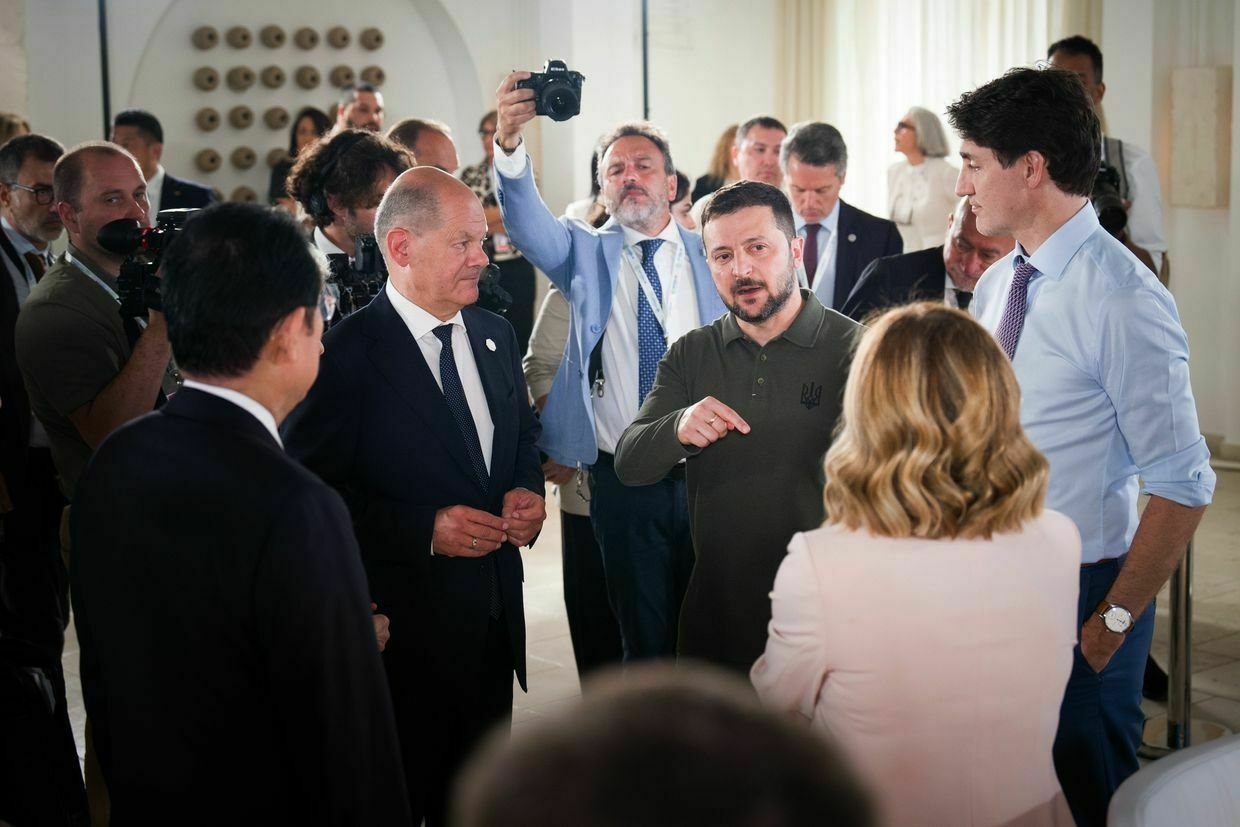
-
High stakes, low resolve: What Ukraine can expect from the upcoming G7 Leaders' Summit
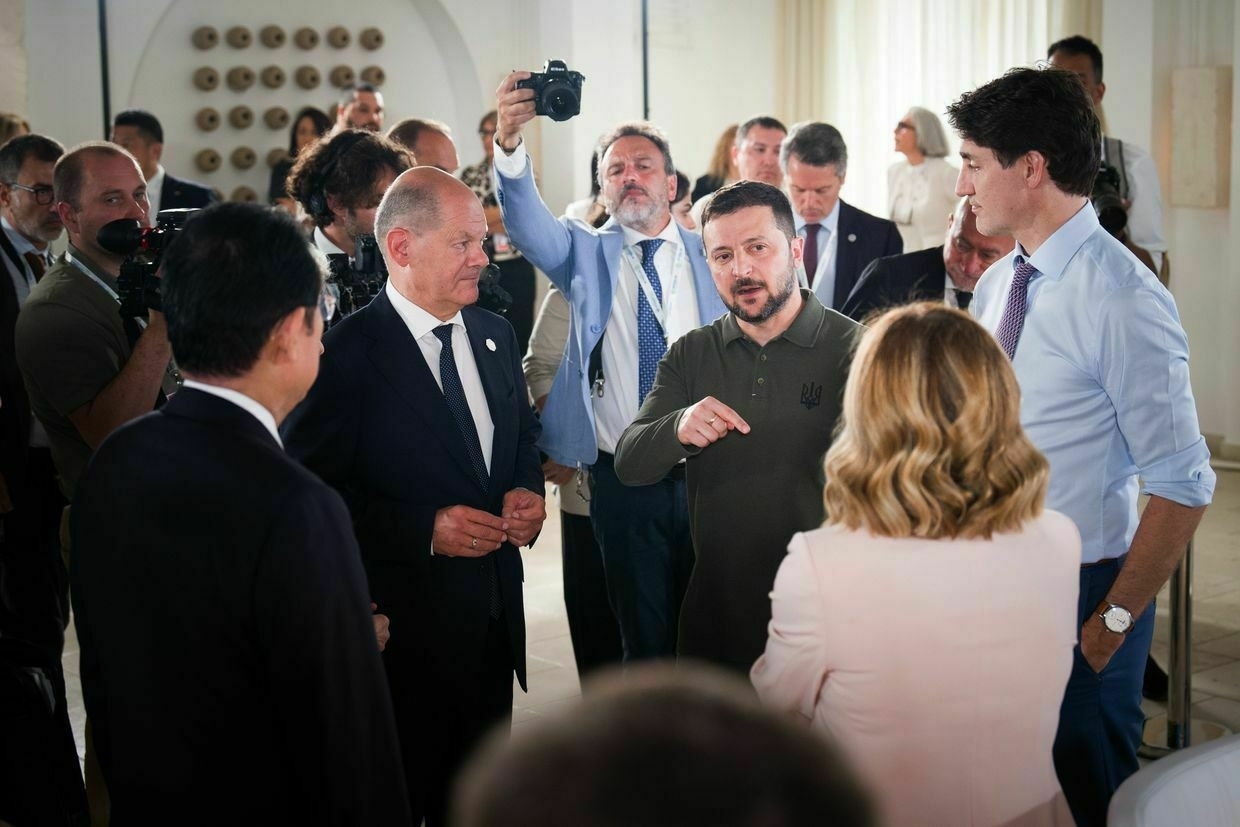
As world leaders prepare to gather in the remote community of Kananaskis in Alberta, Canada for the Group of Seven (G7) Leaders' Summit on June 15-17, Russia’s war in Ukraine once again holds center stage — but views on how to address the three-year conflict diverge sharply.
In the five months since U.S. President Donald Trump’s second term began, the G7’s core principle of unity and collective action has continued to break down amid Washington’s muted response to Russian aggression.
Canada, which holds the G7 presidency in 2025, invited President Volodymyr Zelensky to participate in what will be his fourth — and arguably most fragile — G7 Leaders' Summit since the outbreak of the full-scale invasion in 2022.
As deadly attacks on Ukrainian cities intensify night after night, Zelensky will be tasked with attempting to hold together international support for Kyiv while advocating for more punitive measures against Moscow.
For Zelensky, the summit marks an opportunity to revitalize Western support for sanctions against Russia, impose punitive economic pressures on Russia’s war machine, and potentially rekindle relations with Trump in a pivotal face-to-face meeting.
A high-stakes Zelensky-Trump meetingZelensky is expected to meet with Trump on the sidelines of the G7 summit on June 17, marking their third in-person meeting since the American president took office in January. The proposed meeting may serve as an inflection point for Zelensky as pressure mounts on Trump from Western allies.
“Both teams are working to ensure we meet,” Zelensky said on June 14 during a closed-door briefing attended by the Kyiv Independent.
After a disastrous first in-person meeting between the two leaders in the Oval Office in February — during which Trump and Vice President JD Vance lambasted Zelensky over what they described as “a lack of gratitude for U.S. support” — a second meeting in a neutral setting helped smooth over tensions.
After speaking with Trump at the Vatican following the funeral of Pope Francis in early May, Zelensky praised their short, yet "most substantive" conversation.
"With all due respect to our teams, the one-on-one format, in my opinion, worked. We had the right atmosphere for the conversation," Zelensky said after the talk.
Following the Vatican talks, Trump reiterated calls for a Russian ceasefire, even threatening to impose sanctions on Russia — a strikingly different tone than after his initial Oval Office meeting with the Ukrainian president.
In the month since their last in-person meeting, tensions between Trump and Zelensky have risen again. Despite his threats, Trump has not followed through on implementing additional economic pressure on Moscow.
On June 12, Zelensky decried Washington's lack of urgency around sanctions, suggesting that Russia is "lying to Trump." He said that Russian President Vladimir Putin's strategy is to maintain the illusion of dialogue without ever committing to a ceasefire.
Trump gave Putin a ‘two-week’ deadline to consider peace in Ukraine. Instead, Russia just launched more drones.A “two week” deadline imposed by U.S. President Donald Trump to see if Russia is serious about peace in Ukraine has come and gone, with Moscow’s escalation of attacks on civilians during this period failing to draw the slightest condemnation from the White House. “We’re going to find outThe Kyiv IndependentYuliia Taradiuk
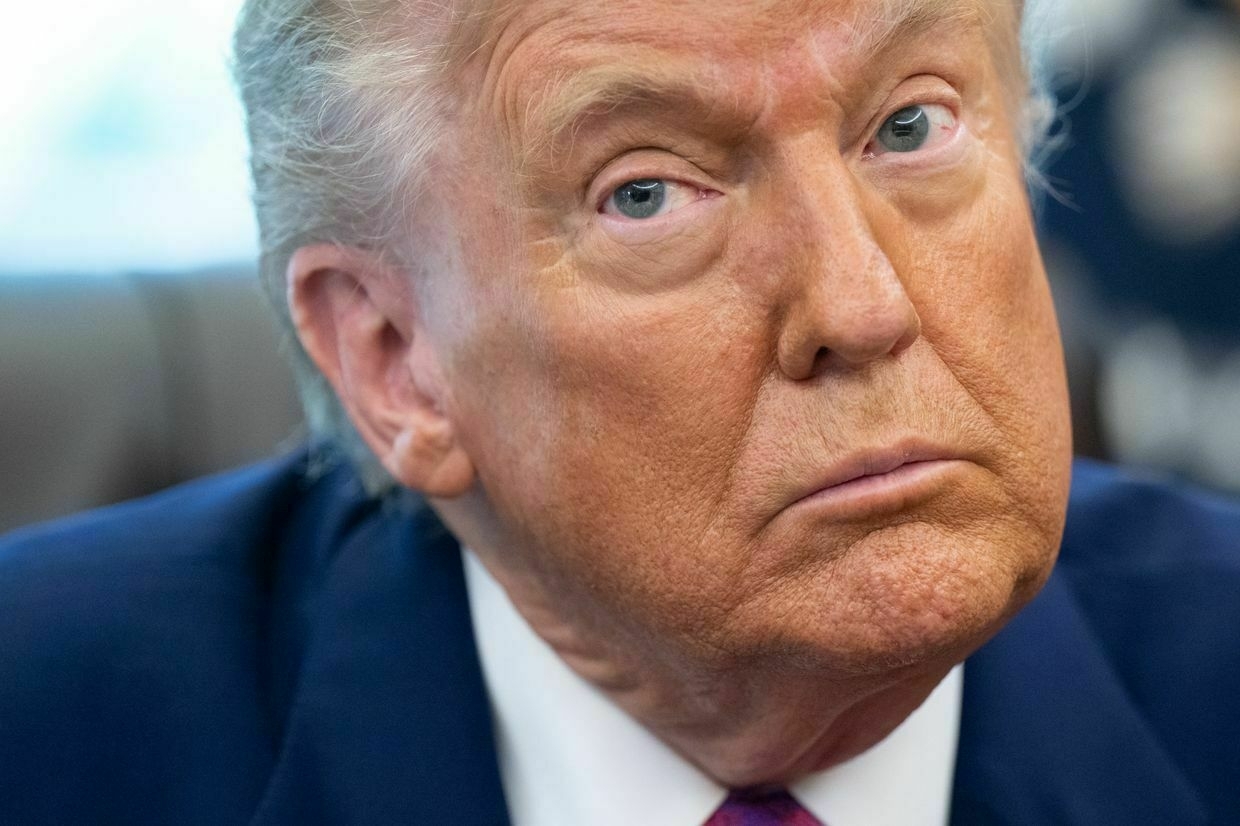
Adding to the anxiety is the Trump administration's lukewarm commitment to military support for Ukraine.
U.S. Defense Secretary Pete Hegseth recently announced that the Pentagon will reduce funding allocated for military assistance to Ukraine in its 2026 defense budget — a decision that Ukrainian lawmakers have warned could have "dire consequences" on the battlefield.
With Trump openly questioning continued U.S. support for Ukraine as well as NATO commitments, his policies have already begun to reshape G7 leaders' strategic calculations — especially when it comes to long-term security guarantees for Kyiv.
"The approach to implementing President Trump's policies is characterized by chaos and uncertainty," political analyst and associate professor at Taras Shevchenko National University Yaroslav Teleshun said.
"But chaos, under certain circumstances, is also a tool that can either accelerate or slow down various processes, or even radically change them. The key question is to what extent Ukraine and members of the club of great powers are ready to work with this and use it to their advantage," Teleshun told the Kyiv Independent.
In the meantime, Trump admitted on social media that he has been sheltering Russian from facing serious consequences as a result of his lack of action — even encouraging Senators to postpone and soften Congress' sanctions bill against Russia.
"What Vladimir Putin doesn't realize is that if it weren't for me, lots of really bad things would have already happened to Russia, and I mean really bad. He's playing with fire," Trump wrote on May 27.
Zelensky's third opportunity at talks comes at a critical crossroads in U.S. support for Ukraine. Another high-stakes meeting with Trump could once again change the tenor of relations between the two leaders — for better or worse.
From buffer zone to new front: Russia pushes deeper into Sumy OblastIn March 2025, as Ukrainian forces made their final retreat from Sudzha in Russia’s Kursk Oblast, new grey spots began to appear on open-source maps on the other side of the state border, in Ukraine’s Sumy Oblast. For the first time since 2022, when Moscow’s forces retreatedThe Kyiv IndependentFrancis Farrell
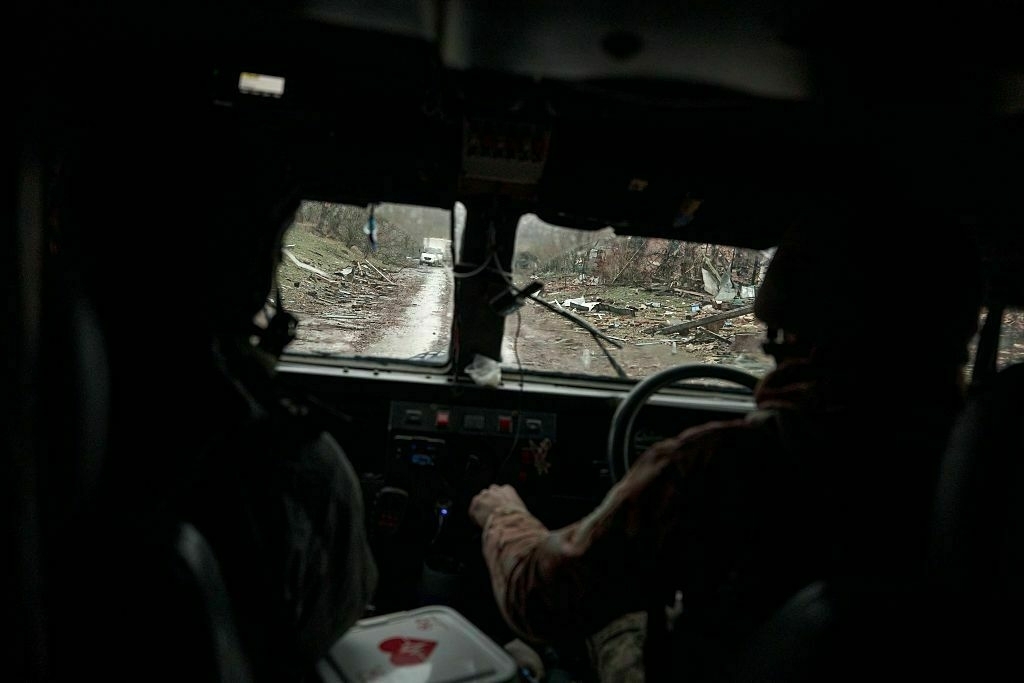
Putting pressure on Russia's war machineWith Trump in power, G7 consensus on the war in Ukraine is collapsing — and with it, the hope of unified economic action against Russia. Zelensky will likely find himself advocating for the type of coordinated response that hasn't been seen since the Biden administration.
While the European Union plans for the implementation of an 18th sanctions package against Russia on energy, banking, and oil, Trump refuses to set a deadline as to when the U.S. can be expected to impose additional sanctions.
Trump has repeatedly threatened to impose sanctions on Russia if he does not see progress in peace talks between Kyiv and Moscow — and repeatedly failed to follow through on these threats.
Despite Russia's rejection of a ceasefire, Trump has said he hasn't imposed new sanctions because he believes a peace deal might be within reach.
"If I think I'm close to getting a deal, I don't want to screw it up by doing that," he said on May 28, adding that he is prepared to act if Moscow stalls further.
While Trump has admitted that Russia may be "tapping me along," he refuses to impose sanctions as it may hinder future business and trade opportunities with Moscow, according to the New York Times.
Trump's comments heavily differ from those of his European allies, who, for the most part, support additional economic pressure on Moscow.
"Russia's goal is not peace," European Commission President Ursula von der Leyen said in pushing for consensus on additional sanction on Russia at the upcoming G7 meeting. "Strength is the only language that Russia will understand."
In addition to sanctions, proposed changes to the oil price cap will also be discussed.
Russia's Finance Ministry has leaned on oil and gas taxes to finance growing military expenditures. The current G7 price cap bans Western companies from shipping, insuring, or otherwise servicing Russian oil sold above $60 per barrel, limiting the country's revenue from oil exports.
The EU has called for the G7 to agree to the reduction of the oil price cap from $60 to $45 per barrel.
For his part, Zelensky called on June 10 for the price cap to be "stronger," proposing to lower it from $60 to $30 per barrel in order to pressure Moscow to declare a ceasefire.
"A ceiling of $45 per barrel of oil is better than $60, that's clear, that's true. But real peace will come with a ceiling of $30," Zelensky said. "That's the level that will really change the mindset in Moscow."
Key to Russia’s defeat lies in its economyAs the war in Ukraine grinds on, attention remains fixed on the battlefield. But Russia’s most vulnerable flank is not in the trenches — it’s in the treasury. The West, and especially the United States, holds economic levers that could push Vladimir Putin toward serious negotiations or even collapseThe Kyiv IndependentWojciech Jakóbik
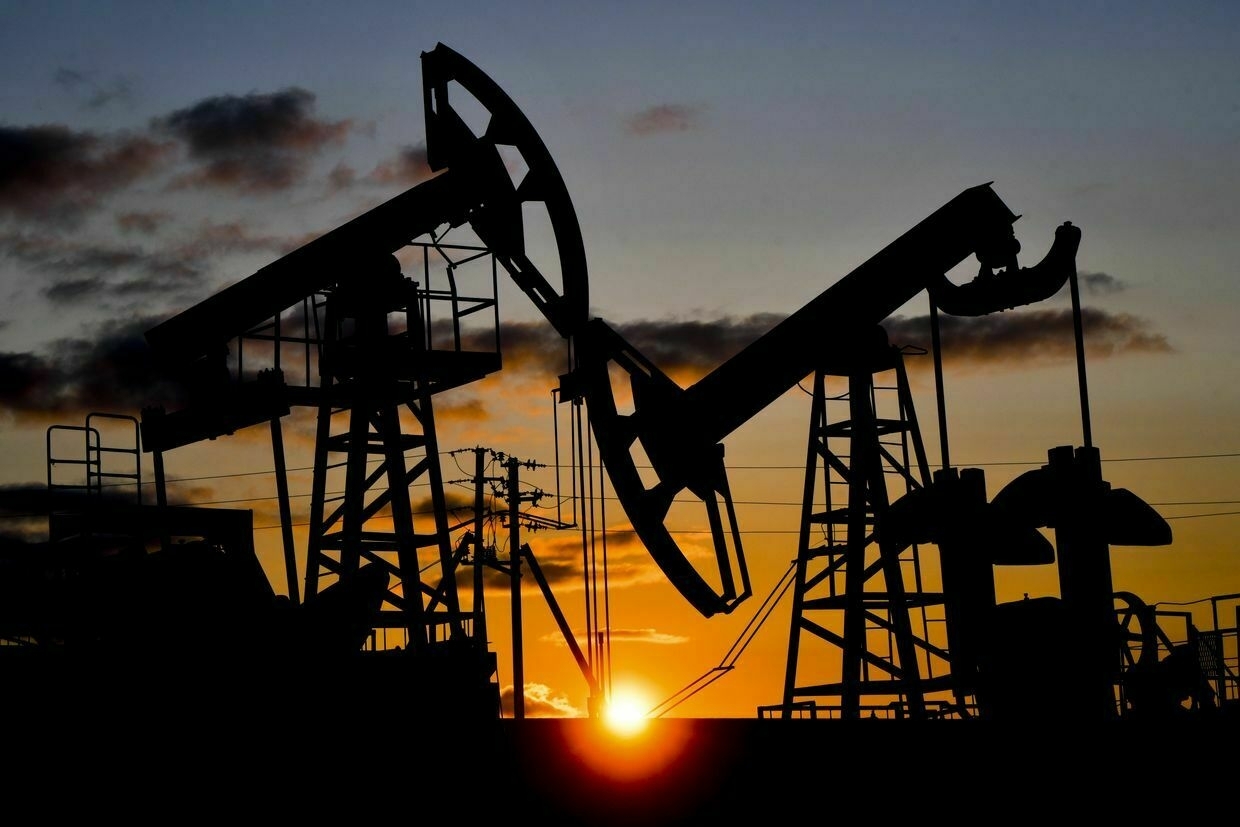
While U.S. officials have not publicly commented on renewed efforts to reduce the price cap, the U.S. opposed a joint G7 effort at the finance ministers meeting in May to lower the cap after U.S. Treasury Secretary Scott Bessent reportedly declined to support it.
In a preview of the potential battle to come over the price cap, Reuters reported on June 12 that G7 nations are prepared to lower the Russian oil price cap from $60 to $45 a barrel even without support from the United States.
The upcoming summit will mark a rare opportunity for Zelensky to advocate for punitive economic measures on Russia in face-to-face meetings with world leaders, encouraging any holdouts to take additional measures.
G7 of disunity?Unlike the European Union — which legally requires unanimous consent to enact certain measures, such as sanctions — the G7 relies on informal consensus to make an impact on the global economy.
At past G7 summits, joint communiques at the conclusion of meetings have made significant impacts on Russia and Ukraine.
The $60 price cap on Russian oil was jointly introduced by the G7 and EU in December 2022. Similarly, G7 nations finalized a framework agreement for a $50 billion loan for Ukraine backed by frozen Russian assets during the 2024 G7 Leaders' Summit in Italy.
While the G7 has a strong record of progress in supporting Ukraine through economic policy, next week's summit will serve as a major test of resolve for the bloc's collective unity.
Political analyst Teleshun says the G7 Summit is unlikely to be defined by joint declarations, but rather by attempts to navigate a new mode of cooperation among partners. The main goal of the summit, according to him, will be not so much to agree on joint statements as to find possible effective forms of further coexistence between partners.
Ukraine, he adds, will remain a central — and paradoxical — issue: one that both unites and divides. While decisions on future military aid may ultimately be left to individual governments, Kyiv can still use this moment to its advantage. Tightening sanctions against Russia, for instance, could serve as a unifying initiative for G7 countries, but it will require sustained diplomatic effort.
The U.S. objected on May 21 to the inclusion of clauses on "further support" for Ukraine in a joint statement during the precursor meeting of G7 finance ministers. Washington also refused to label Russia's full-scale invasion of Ukraine as "illegal" in the text, according to sources who spoke to Politico.
As Ukraine continues to hold the line against Russia's grinding advances, signs of disunity among Western allies will likely affect Kyiv's ability to fight back against Moscow's forces — and likely embolden Moscow's territorial ambitions.
The G7 summit will once again serve as an indicator for Putin as to what kind of collective response may be expected if he is to pursue additional territorial gains. For Ukraine, the summit will be indicative of the level of unified support it can expect from the U.S. and allies as the war rages into its fourth year.
Olena Goncharova contributed reporting.
NATO summit statement omits Ukraine’s entry bid, $40 billion pledge, Bloomberg reportsThe unusually brief document recognizes Russia as a threat to NATO but not as an aggressor in Ukraine.The Kyiv IndependentMartin Fornusek
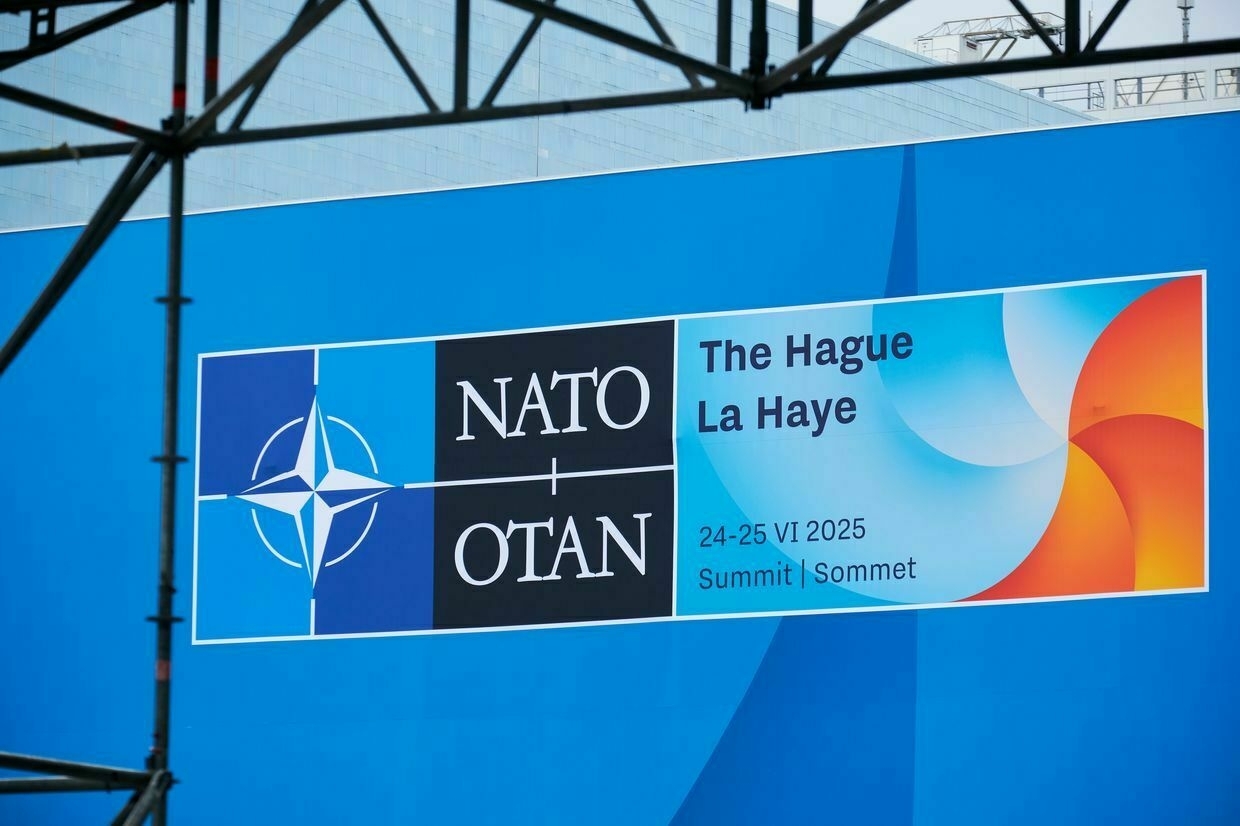
Note from the author:
Hey there, it's Dmytro Basmat, the author of this piece. I'm looking forward to bring you live breaking news coverage from the G7 Leaders' Summit in Canada. My colleagues and I are working around the clock on the ground in Kyiv and overnights in North America to bring you the latest updates on the war in Ukraine. I hope you'll consider supporting us by becoming a paid member of the Kyiv Independent today to help deliver the facts about the war in Ukraine to readers around the world.
-
Russia transfers 50 Ukrainian children to so-called 'rehab camp' in Kalmykia, Kyiv says

Russia has transferred 50 children from the occupied Antratsyt district of Luhansk Oblast to a so-called rehabilitation camp in Kalmykia, Ukraine’s Center for Countering Disinformation (CCD) reported on June 14.
Kalmykia is about 1,170 km (726 miles) by air from Moscow, and its western border lies roughly 300 km (186 miles) from the nearest point on the Russia–Ukraine border.
According to the center, while the “Lesnaya Skazka” (“Forest Fairy Tale”) camp is officially described as hosting sports and creative activities, in fact, it functions as a site of “round-the-clock ideological brainwashing, systemic Russification, and an attempt to erase Ukrainian identity."
Since February 2022, at least 20,000 Ukrainian children have been abducted from Russian-occupied territories and sent to other Russian-controlled areas of Ukraine or to Russia itself, according to a Ukrainian national database, “Children of War.” Only 1,359 children have been returned thus far.
The center compared the camp in Kalmykia to “Krasnaya Gvozdika,” (“Red Carnation”) a facility in occupied Zaporizhzhia Oblast, saying both are used not for recreation, but as tools of Russia’s war strategy.
“These camps have become instruments of assimilation where Ukrainian children are taught distorted history, exposed to Russian propaganda, and conditioned to show loyalty to the Putin regime,” the center said. “War and hostility are normalized, with children being groomed as human resources for future conflicts.”
The watchdog emphasized that separating children from their families, culture, and language places them under the full control of the occupying power — a practice it says constitutes a violation of international humanitarian law and forms part of Russia’s broader genocidal policy toward Ukraine.
In response to Russia’s efforts to indoctrinate Ukrainian children, President Volodymyr Zelensky on June 10 imposed sanctions on 48 individuals and nine organizations associated with the deportation of Ukrainian children, according to a decision of Ukraine’s National Security and Defense Council (NSDC).
Growing up under missiles — Ukrainian childhoods shaped by war (Photos)Ukrainian children are growing up in a world entirely reshaped by Russia’s war. Sirens, blackouts, and bomb shelters are nothing extraordinary — but a part of everyday childhood. This photo story follows five families as they raise their children in the shadow of the ongoing invasion. It’s not aboutThe Kyiv IndependentElena Kalinichenko
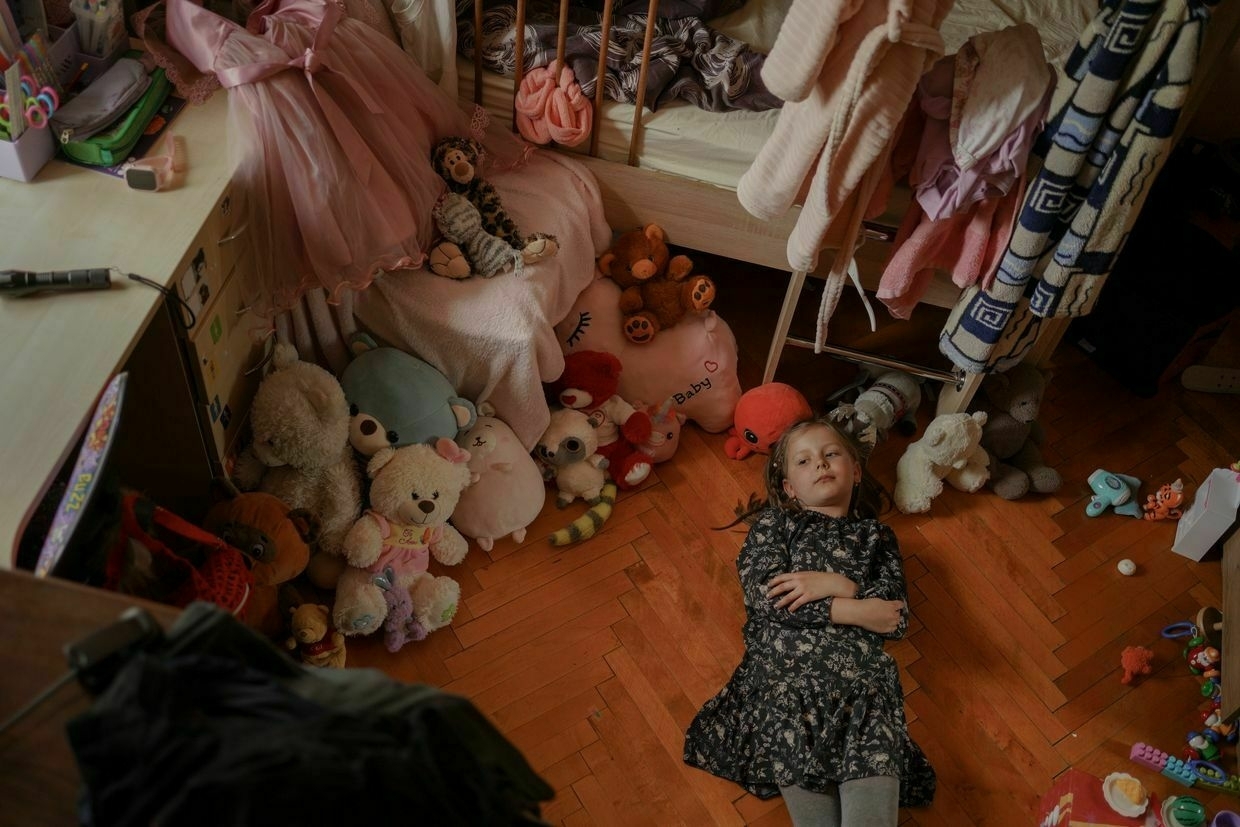
-
Israel asks US to join strikes on Iran’s nuclear sites, officials told Axios
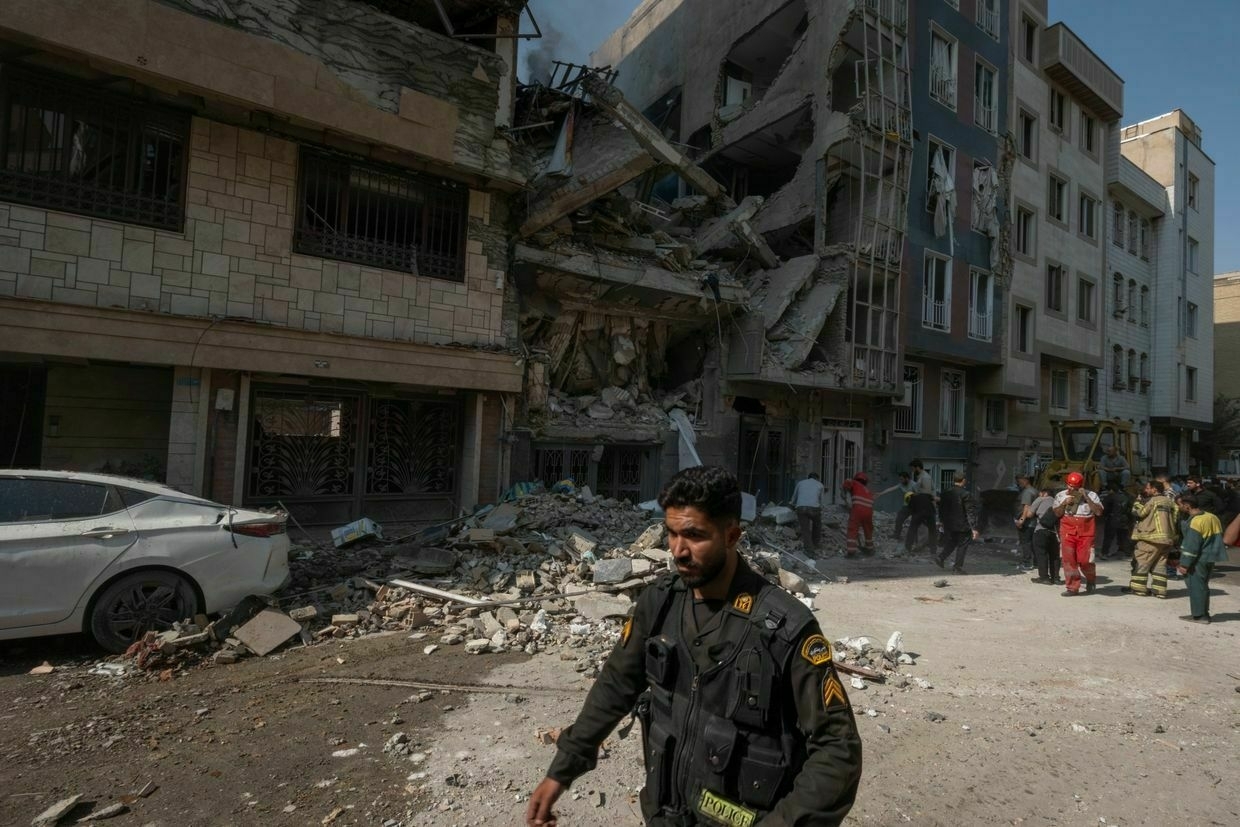
Israeli officials have asked the Trump administration to join military operations targeting Iran’s nuclear program, including a strike on the fortified Fordow uranium enrichment site, Axios reported on June 14, citing two Israeli officials.
The request comes as Israel continues its assault on Iranian targets and warns that it lacks the capability to destroy Fordow alone. The underground facility, located deep within a mountain, is beyond the reach of Israel’s conventional weapons. U.S. forces in the region, however, have the necessary bunker-busting bombs and bomber aircraft to hit the site.
According to an Israeli official who spoke to Axios, Trump suggested in a recent conversation with Israeli Prime Minister Benjamin Netanyahu that he would consider joining the operation if needed. But a White House official denied that claim on June 13.
A second U.S. official confirmed that Israel had urged the U.S. to take part, but said the administration is not currently considering involvement. Israeli Ambassador to the U.S. Yechiel Leiter told Fox News on June 13 that “the entire operation… really has to be completed with the elimination of Fordow."
An Israeli source told Axios that the U.S. is considering the request, and that Israel hopes Trump will agree to it.
A senior White House official told Axios on June 14 that “whatever happens today cannot be prevented,” referring to the Israeli attacks. “But we have the ability to negotiate a successful peaceful resolution to this conflict if Iran is willing. The fastest way for Iran to accomplish peace is to give up its nuclear weapons program,” the official added.
U.S. officials have so far maintained that Iranian retaliation must not target American forces, arguing that the current Israeli operation does not justify attacks on U.S. interests.
Israel-Iran war could provide economic boost Russia needs to continue fight against UkraineIsrael’s “preemptive” strikes against Iran targeting the country’s nuclear program and killing top military officials could have far-reaching implications for Ukraine and could boost Russia’s ability to continue its full-scale invasion, experts have told the Kyiv Independent. Iran has been one of Russia’s staunchest allies throughout the war, providing thousandsThe Kyiv IndependentChris York
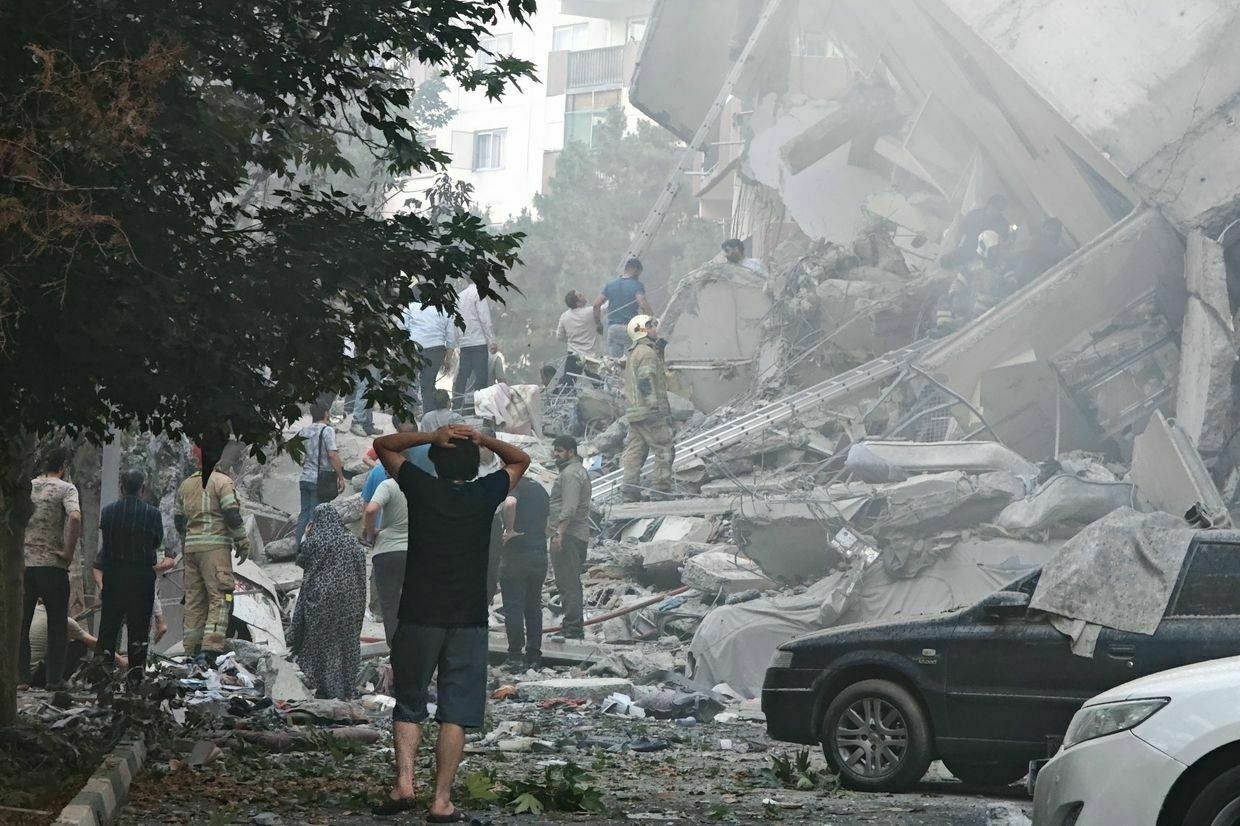
-
Kyiv Pride march takes place, gathers international representatives, faces counterprotesters
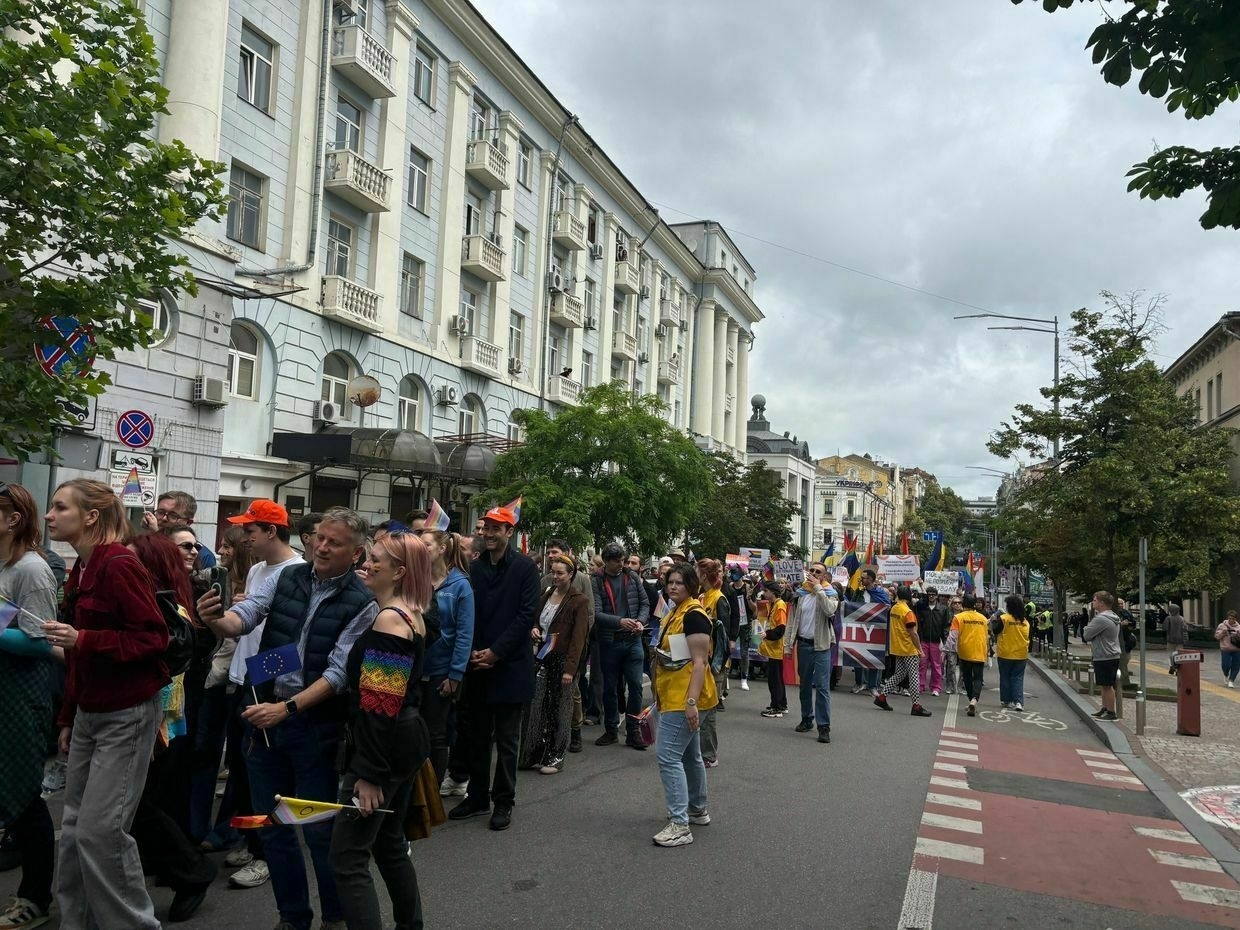
Kyiv Pride held a parade with over 1,500 participants in the Ukrainian capital on June 14, which was met with counterprotests.
“Other Ukrainian Prides also participated — including Kharkiv Pride and Ukraine Pride. Kyiv’s student community was represented, among others, by the Student Parliament of Taras Shevchenko National University of Kyiv and Ukraine Global Scholars,” Kyiv Pride said in a post to Facebook.
On June 7, a drone charity event for Kyiv Pride took place outside the Foreign Ministry building and was met with a nearby counterprotest.
The march was joined by representatives from the EU, Canada, the U.K., and various other countries, including France, Germany, and Spain.
The march was joined by the LGBT+ Military non-governmental organization (NGO) as Russia’s war against Ukraine continues.
“Among the marchers was veteran Viktor Pylypenko, head of the NGO LGBT+ Military for Equal Rights. He drew public attention to the growing loss of military personnel and veterans who are dying at war — while their families remain unrecognized by law,” Kyiv Pride said in its statement.
The march raised 20,000 hryvnia for the Serhiy Sternenko Foundation to purchase drones for the military.
Representatives, including Canada’s ambassador to Ukraine, Natalka Cmoc, joined the event.
“Ambassadors, the Canadian embassy team, along with many diplomats, joined (the) Kyiv Pride march this morning,” Cmoc said.
The Kyiv Pride event was met with a nearby counterprotest.
“With regret, we must note that those who incite violence still have broader access to public space and freely walk through the central streets, while participants of Kyiv Pride March are surrounded by police and restricted in their route. We continue to witness the spread of hate speech,” Kyiv Pride said.
Kyiv Pride held a march in June 2024 for the first time since Russia began its full-scale war against Ukraine in February 2022.
‘Europe hasn’t decided what to do if US steps back’ — key takeaways from Zelensky’s closed-door briefing“Both teams are working to ensure we meet,” President Volodymyr Zelensky said.The Kyiv IndependentAnna Fratsyvir

-
War between IRAN and ISRAEL – How will it impact the world and Ukraine? | Wrap-Up Weekly
-
Ukraine continues destroying Russian aviation: consequences of drone strikes #shorts
-
Ukrainian drones destroy Russian air defense systems in occupied Zaporizhzhia Oblast, military intelligence says
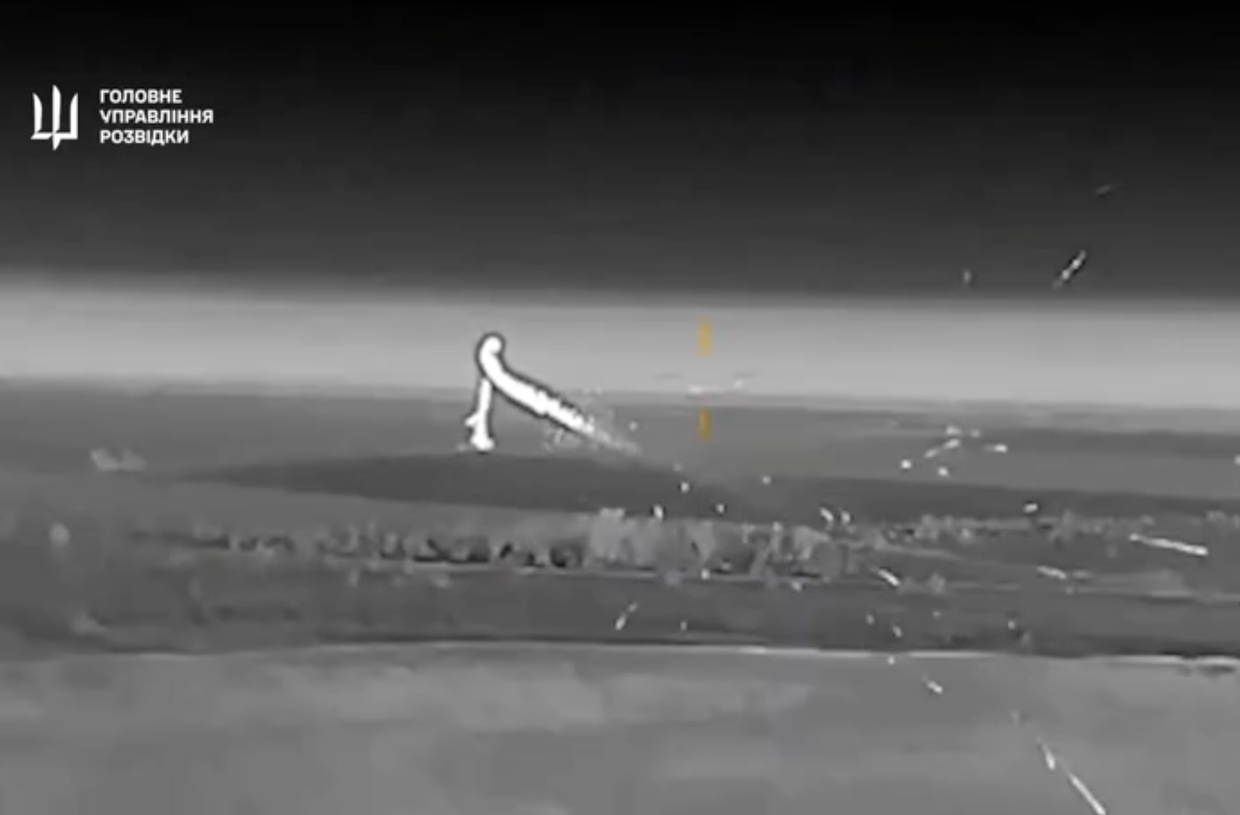
Ukraine’s military intelligence (HUR) destroyed three Russian air defense systems using drones in the occupied Zaporizhzhia Oblast on June 14, HUR says.
“Strike drone masters of the Department of Active Operations of the HUR of the Ukrainian defense ministry discovered and destroyed expensive air defense systems of the Russian invaders in the temporarily occupied territory of the Zaporizhzhia region,” HUR reported in a post to Telegram.
Ukraine’s military regularly strikes military targets in Russian-occupied territories and deep within Russia in an attempt to diminish Moscow’s fighting power as it continues its war against Ukraine.
A Russian Buk-M3, a Pantsyr S1, and a 9S19 Imbir radar from the S-300V air defense system were destroyed in the Ukrainian drone attack.
“The video shows a stunning maneuver of a Ukrainian drone dodging a Muscovite anti-aircraft missile, as well as episodes of successful fire strikes,” HUR’s statement said.
On June 1, Ukraine launched a game-changing drone attack on four key Russian military airfields, damaging 41 planes, including heavy bombers and rare A-50 spy planes.
Kyiv claimed it disabled 34% of Russia’s strategic bomber fleet in what is seen as one of the most daring operations during Russia’s full-scale war.
Ukraine’s military intelligence agency was behind explosions near Desantnaya Bay in Russia’s far eastern Vladivostok on May 30, which reportedly damaged military personnel and equipment, a source in HUR told the Kyiv Independent.
From buffer zone to new front: Russia pushes deeper into Sumy OblastIn March 2025, as Ukrainian forces made their final retreat from Sudzha in Russia’s Kursk Oblast, new grey spots began to appear on open-source maps on the other side of the state border, in Ukraine’s Sumy Oblast. For the first time since 2022, when Moscow’s forces retreatedThe Kyiv IndependentFrancis Farrell
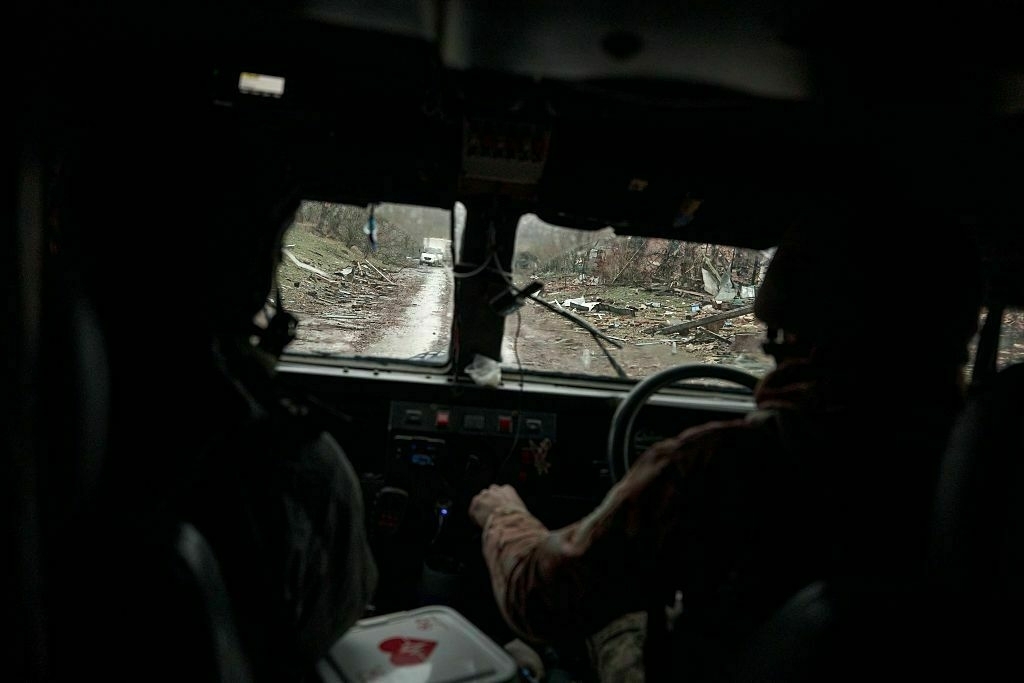
-
Putin, Trump hold phone call, Russia's Ushakov claims
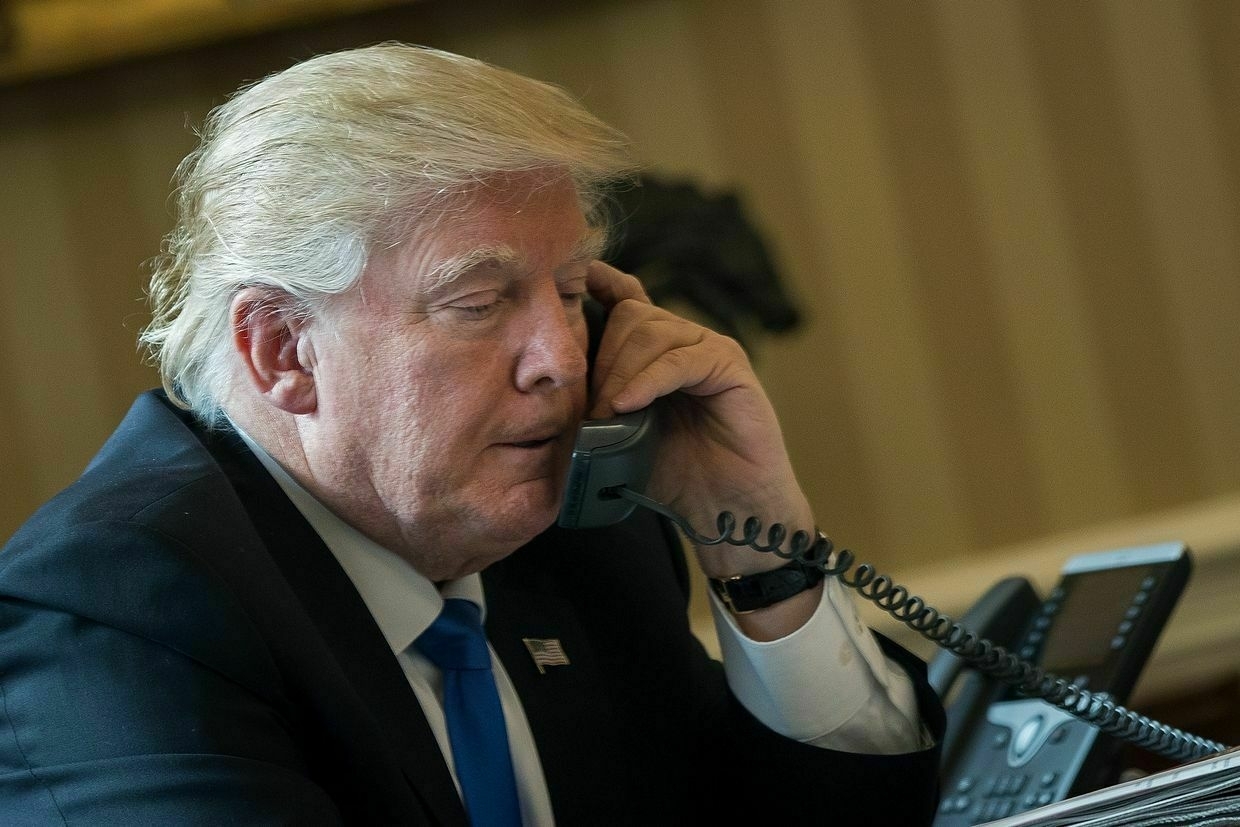
Editor’s note: This is a developing story and is being updated.
U.S. President Donald Trump and Russian President Vladimir Putin held a phone call, Putin’s foreign policy aide, Yuri Ushakov said on June 14.
“Another telephone conversation between Russian President Vladimir… Putin and U.S. President Donald Trump,” Russian state media reported, citing Ushakov.
The phone call took place on Trump’s birthday, as the U.S. president marks the occasion with a military parade in Washington.
Russia has intensified drone and missile attacks on Ukraine following two rounds of largely inconclusive peace talks between Moscow and Kyiv in Turkey.
Israel and Iran continued to exchange attacks on June 14, more than 24 hours after Israel launched its first strikes on Iran’s nuclear sites and military leadership.
Trump has said that the U.S. military is on high alert and watching for any kind of retaliation, adding that the U.S. will respond to defend itself or Israel if Iran strikes back.
Trump gave Putin a ‘two-week’ deadline to consider peace in Ukraine. Instead, Russia just launched more drones.A “two week” deadline imposed by U.S. President Donald Trump to see if Russia is serious about peace in Ukraine has come and gone, with Moscow’s escalation of attacks on civilians during this period failing to draw the slightest condemnation from the White House. “We’re going to find outThe Kyiv IndependentYuliia Taradiuk
